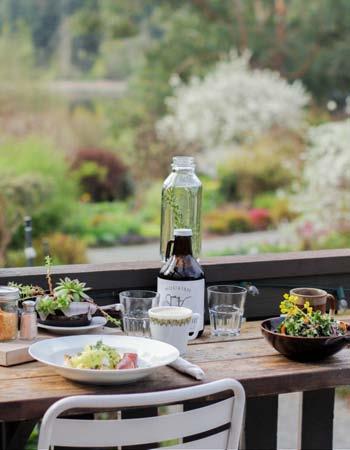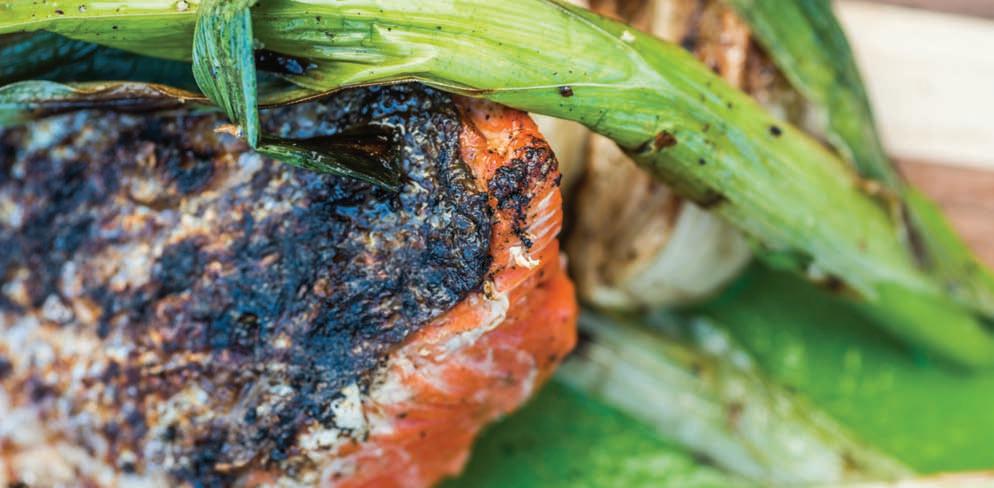








































Working with local designer Aleya Samji, we’ve refreshed the design to enhance the reader experience, brought in some new faces in the creative department, and improved our advertising partners’ visibility. We are expanding our selection of stories and in the months ahead will be featuring more in-depth articles about our local food culture. We all know Victoria and the Island is rapidly changing; Victoria is growing up into a big city and we want to tell those stories—through words and through images. This evolving design refresh is tailored to the people who told us they love our content and want more of it. And to make the type easier to read and the pages easier to turn, we’ve picked a whiter, thicker paper. Dig in!
Clarke & Co. has opened at the corner of Blanshard and Broughton, offering bistro food, cocktails and wine in the space formerly occupied by the Clay Pigeon. We’re hearing good things about the Elk Tartare with juniper and blackberry.
FACEBOOK.COM/CLARKEANDCO
Jones Barbeque enjoyed a late summer opening - what better time for a BBQ joint to open? Promising Texan BBQ, steeped in tradition, open 11am-11pm every day at 1725 Cook St.
Visit eatmagazine.ca for news and events from:


COWICHAN VALLEY
UP ISLAND
TOFINO
UCLELET



VANCOUVER
FACEBOOK.COM/JONESGOTMEAT
Table 21 has opened at the Hilton Double Tree on Douglas St with chef Jason Clifford at the helm.
FACEBOOK.COM/TABLETWWENTYONE
Ever wonder if there is a place you can go and indulge in a nostalgic craving for Pop Tarts or Frosted Flakes? Rise & Grind opened on Broad St earlier this summer (former location of Bagels on Broad) and has a great selection of breakfast sandwiches as well as childhood breakfast faves.
INSTAGRAM: @RISEANDGRINDVICTORIA
Fernwood Coffee Company has launched a new Coffee Cream Soda. Sold in cans or on tap at the Parsonage Café. Fernwood sells a Cold Brew carbonated coffee in cans.
FERNWOODCOFFEE.COM
WELCOME TO YOUR NEW EAT MAGAZINE. YOU’VE PROBABLY ALREADY NOTICED OUR FRESH COVER LOOK, BUT WE’VE ALSO TWEAKED THE ENTIRE MAGAZINE.
Frankie's Modern Diner opened at 910 Government St in early June. This is a family style restaurant that offers a contemporary take on the retro diner experience.
FRANKIESMODERNDINER.COM
Quebec chocolatier Les Chocolats Favoris has opened their first BC location at 1010 Government St. The chocolatier is famous for their 12 flavours of dipping fondues, which they also sell in cans to be enjoyed at home.
CHOCOLATSFAVORIS.COM
Local tea emporium Silk Road has opened a new Vancouver store, now open at 2066 West 4th Ave in Kitsilano.
SILKROADTEASTORE.COM
Do you need a little help with dinnertime?
Local Urban Bites is a new company offering meal kit delivery service. Choose three meals for two or four people and LUB will deliver prepped ingredients, tips and recipes. This would be a great tool for helping teens learn how to cook their own meals or a thoughtful gift for a young adult who’s just moved into their first
apartment.
LOCALURBANBITES.COM
Sometimes it takes a little time for news from the West shore to reach the city, so this isn’t exactly a “buzz” item, but I’ve been hearing a lot about Borella Italian Kitchen out in Langford recently. I thought I’d mention it now, since I missed it when it opened back in the New Year.
BORELLAITALIANKITCHEN.COM
Cornerstone Meats is a new butcher shop open at 1420 Quadra St. Supplied by Meadow Valley Meats, Rossdown Farms and Albion Fisheries, Cornerstone offers Halal standard, farm raised, locally sourced cuts.
CORNERSTONEMEATS,CA
Rumours swirling at press time include the relocation of Discovery Coffee’s present Blanshard St location to the new Fort Common District at the corner of Broughton and Blanshard and Cowichan Bay Seafood’s relocation from the Hudson to the storefront beside the Whole Beast and Village Butcher have been confirmed. Both will be opening soon..
DISCOVERYCOFFEE.COM
COWICHANBAYSEAFOOD.COM
At press time there are still tickets available for the Great Canadian Beer Festival, taking place this year Sep 9-10 at the Royal Athletic Park.
GCBF.COM
The Victoria International Wine Festival returns to the Parkside Hotel and Spa Sept 23-24. This is festival showcases some of the best international wines and is directed at building the knowledge of the average wine consumer, and demonstrating new wines and acknowledging beloved wine standards to veteran consumers. See pg. 42
VICWF.COM
Oct 15 is Tasting Room Day at the Victoria Public Market at the Hudson. Local wineries, distilleries and breweries will have samples for tasting as well as bottles for purchase.
The annual Harvest Grape Stomp on Salt Spring Island will take place this year Oct 16 from 12-5pm at Salt Spring Vineyards. This event features live music, grape-stomping for all with competitions, oyster shucking, special wine tastings, local foods and fun for all. $5 entrance donation for local charities.
SALTSPRINGVINEYARDS,COM
From Beethoven to Breakfast, the successful fundraising campaign that raised over $10,000 last year towards feeding Victoria school children in need, is planning t repeat the fundraiser again this year in mid-October. Keep an eye on the Victoria Conservatory of Music’s website for updates.
VCM.BC.CA.CA
Crush – A Fine Wine Affair is a fundraiser for the Belfry Theatre taking place at the Inn at Laurel Point on Oct 23. Enjoy fine wine tastings from more than 20 of BC’s best wineries. Food by Inn at Laurel Point chef Takashi Ito and accompanied by live music.
BELFRY,BC.CA/CRUSH
The 8th annual Art of the Cocktail festival will be taking place this year Oct 22-23.
ARTOFTHECOCKTAIL.CA
It’s Gulf island festival season if you’re up for some ferry rides… the 17th Annual Salt Spring Apple Festival is on Oct 2 this year and the Galiano Island Blackberry Festival takes place the following Saturday Oct 8 (Thanksgiving weekend).
SALTSPRINGAPPLEFESTIVAL.COM
GALIANOFOODPROGRAM.CA


During a ten-day (Sept 24-Oct 3) span of the Savour Cowichan Culinary Festival, Barge On In and Octoberfest will be held on a floating barge in Mill Bay. In addition to these events, dozens of artisanal food and beverage producers will also be hosting other epicurean events throughout the Cowichan Valley.
SAVOURCOWICHAN.COM
Congratulations to the team at Agrius for their nomination as one of Canada’s best new restaurants of 2016!
AGRIUSRESTAURANT.COM
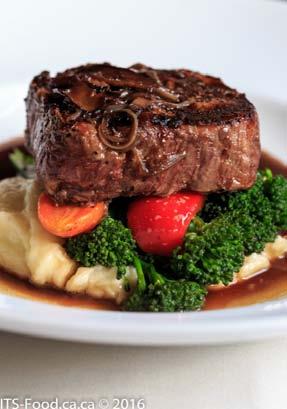




FOUNDER & EDITOR
Gary Hynes
PUBLISHER
Pacific Island Gourmet
CONTRIBUTING EDITOR
Carolyn Bateman
VANCOUVER CONTRIBUTING EDITOR
Julie Pegg
SENIOR WINE WRITER
Larry Arnold
PRODUCTION
Gary Hynes
DESIGN CONSULTANT
Aleya Samji
COPYEDITOR
Cynthia Annett
REGIONAL REPORTERS
Tofino Ucluelet, Jen Dart
Victoria, Rebecca Baugniet
Cowichan Valley-Up Island, Kirsten Tyler
CONTRIBUTORS
Larry Arnold
Caleb Beyers
Raymond Biesinger
Joseph Blake
Michelle Bouffard
Holly Brooke
Adam Cantor
Cinda Chavich
Jennifer Danter
Pam Durkin
Lee Hodges
Colin Hynes
Elizabeth Monk
Michaela Morris
Elizabeth Nyland
André Rozon
Adrien Sala
Aleya Samji
Shelora Sheldan
Rebecca Wellman
COVER


Jennifer Danter & André Rozon
ADVERTISING DIRECTOR
Gary Hynes
SENIOR ACCOUNT MANAGER
Susan Worrall
DIRECTOR OF BUSINESS DEVELOPMENT
Lindsay Van Gyn
FACEBOOK/EATMAGAZINE
TWITTER/EATMAGAZINE
INSTAGRAM/EATMAG
For advertising and other inquiries: PHONE 250.384.9042, EMAIL editor@eatmagazine.ca ONLINE EatMagazine.ca, TheEatJournal.com
MAILING ADDRESS Box 5225, Victoria, BC, V8R 6N4
STOCKISTS EAT is delivered to over 300 pick-up locations in BC. Visit our website for locations.
PRINTED IN BRITISH COLUMBIA
EAT ® is a registered trademark.
Est. 1999


“We wanted to be a tapas bar with a distinctly west coast twist,” explains Table 21’s chef Jason Clifford as we settle into a window seat that looks out toward the Inner Harbour down Humbolt Street. “The menu is not distinctly “farm-to-table,” but we use 63 Acres premium B.C. beef, Johnson’s family farm pork from Chilliwack and B.C. fruits and vegetables.” The Nanaimo-bred chef tells me how he’s changed the menu once since the 84-seat restaurant opened in November and will continue to change it with the four seasons. “All of our stocks, sauces, condiments, pasta, pizza dough and soft cheeses are created from scratch.”
Restaurant manager Keith Bechervaise joins us as my food arrives. I nibble on an addictive, savoury mushroom toast (Portofino garlic baguette topped with wild mushrooms and melted goat cheese) and grilled prosciutto-wrapped asparagus while listening to the story of Table 21’s origins.
“To name our new restaurant, we did a Facebook contest. The winner chose Table 21.” The young restaurant manager adds with a chuckle: “21 being our address—777 Douglas Street. For our opening special we charged only 21 percent of every bill, and it packed the restaurant every night and created two-hour waits.” It’s worth noting that there is in fact an actual table 21—a large group table made from salvaged wood from the owner’s barn.
The stylish and relaxed restaurant showcases local, sustainable ingredients to fulfill any diner’s west coast comfort food cravings. Table 21 succeeds on many levels, and Victorians will appreciate the restaurant’s take on adventurous, small-plate offerings.
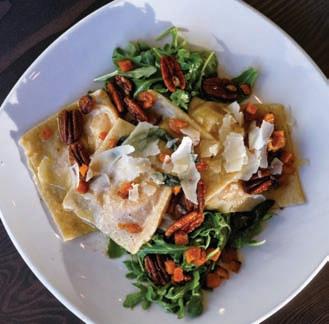
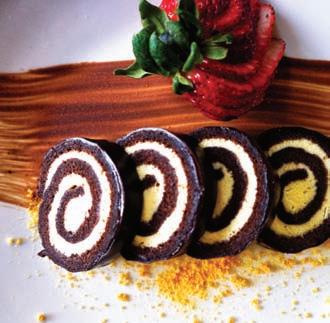
My house-marinated, perfectly seared tuna arrives with succulent tomato-artichokeolive salad antipasto and house-fried corn chips. It tastes fresh and delicious.
“That antipasto is my take on the canned vegetables my mom used to make,” chef
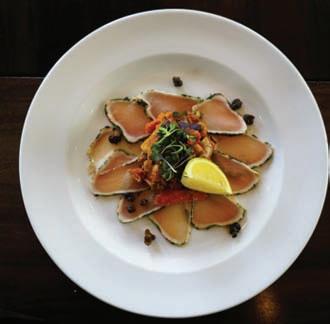
explains. Clifford worked at the former Wharfside Seafood Grill in Victoria for ten years where he worked his way up to sous chef while getting his Red Seal Certificate at Camosun. He had been at the Marriott for 10 years when he saw an exciting opportunity to create something unique at Table 21 in Victoria’s DoubleTree by Hilton. “It has been a lot of fun to open the restaurant and see it evolve, and we’re starting to develop a following of regulars who dine here often.”
I love Clifford’s Ancho Chili Pork Belly on a bed of aged, white Cheddar grits. The subtly spiced pork was perfectly matched with the chef’s lightly seasoned grits, a clever version of the Deep South favourite. Classic succotash, like grits another staple of southern soul food, blends local roasted corn, bell peppers, lima beans, heirloom tomatoes and fried zucchini blossoms in Clifford’s inspired take on the West African dish. Even better was chef’s house-made, egg-yolk-heavy ravioli stuffed with spinach, roasted tomato and bell pepper purée topped with shaved Grana Padano.
“I eat these raviolis three times a week!” Clifford beams. Some of his own favourites on the menu are the Romesco sauce—a Spanish sauce of nuts, roasted peppers and olive oil served with Angus Sirloin—and the short ribs. “I served them with the grits last winter too, but it’s a cold weather dish so I changed it to pork belly this season, and it’s really popular too.” Clifford adds with a broad grin: “For dessert I love our house-made ice cream and Table 21 Ho Hos, which are my take on that old Sara Lee treat.”
“We’ve got decent prices on our drinks too,” Bechervaise chimes in. “Red Rooster Merlot and Pinot Gris for $5.50. We have double happy hour from 4-6 p.m. and 8-10 p.m. where we offer drinks starting at $3 and food specials for $7. It’s almost always happy hour at Table 21.” An impressive start for a new restaurant with chef who emphasizes outsized flavours and comforting, yet innovative cooking.—by Joseph
BlakeVictoria’s newest restaurant, features sharing plates and showcases local, sustainable ingredients.TABLE 21’S CHEF JASON CLIFFORD CLOCKWISE FROM TOP LEFT: TUNA ANTIPASTO, PROSCIUTTO WRAPPED ASPARAGUS, SPINACH RICOTTA, THE TABLE 21 HO HOS,
The Roost is a vibrant little hub for everything we dream Vancouver Island should be. Dallas and Sarah Bohl along with eclectic patriarch, Hamish Crawford came to the Saanich Peninsula with the idea of “building a bakery where people could sit and enjoy this beautiful piece of Vancouver Island, while nibbling on yummy baked goods made from produce grown on their farm”. The café that started with “four cups and four plates” has grown to include an outdoor bistro, a winery, a grain mill, a garden market, and events center. As of October, The Roost will unveil substantial upgrades and expansions to all of its amenities, includ-
ing a 65-seat restaurant, outdoors activities areas, a picnicking venue, and wine cellar.

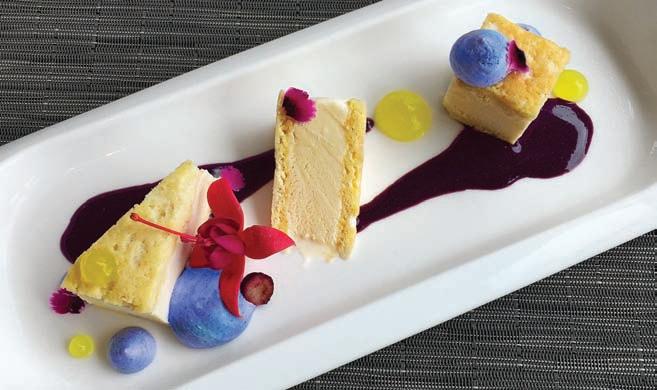
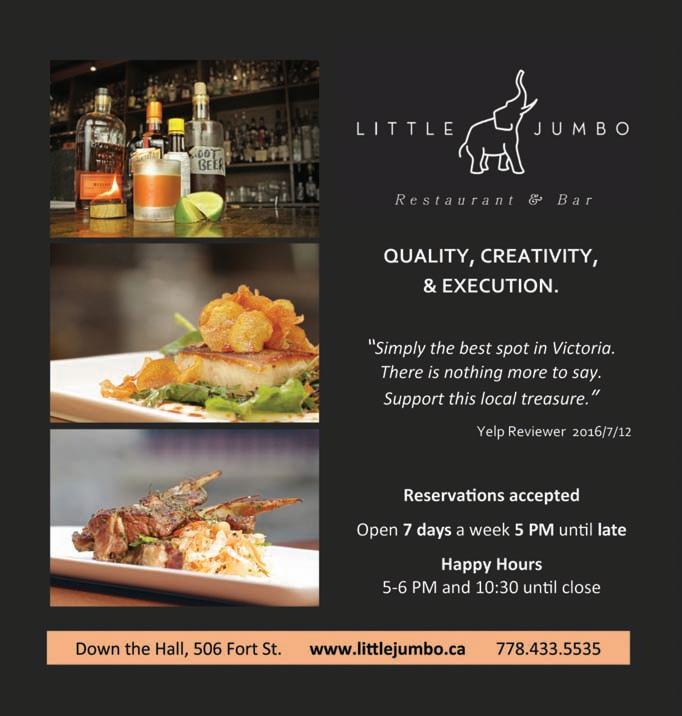
The Roost will be bigger, better and so much more fun. While Sarah and Dallas are expanding on their dream of serving excellent Saanich Peninsula produced food and wine, Hamish is able to continue showcasing and enriching his eccentric hobbies. The prolific pumpkin growing shed houses pumpkins that are set to grow to a record-breaking 1000 kilograms. Tour groups will be able to view his extensive car collection including a Jaguar E-Type and various Classic MGs. The polished concrete wine cellar, complete with handcrafted wooden long tables, also houses a dungeon with replicas of The Iron Maiden, The Rack, and something called The Chair of Discomfort, made by none other than Hamish, himself.
The picnic area behind the new restaurant will allow patrons to take counter service orders and bottles of wine out to an open area surrounded by the vineyard and garden to enjoy an afternoon lunch or sunset dinner. The vineyard has also allowed the family to produce fun and inventive house-made, wine-based cocktails such as ginger mash mimosas, sangrias, and wine spritzers
The activity area will have farm-related games for all ages such as a horseshoe and beanbag toss. The farm market will still produce and mill grain for delicious baked goods and lovely loaves of sourdough and the local favorite, Russian Rye. A garden, greenhouse and orchard, designed by Edible Landscaping, will help to supply the kitchens with a healthy bounty of fruits, berries, nuts and vegetables, to be served in the café and restaurant and showcased at events and long-table dinners. The Bohls have also partnered with Four Quarters Meats, which will supply fine cuts and cured delicacies. “Essentially, we’ll be doing what we do now, just much better” says Dallas.
Sarah, Dallas and Hamish have built up a nice little slice of paradise out here on the peninsula. The property is as much a family home as it is a stage for the culinary wonders of the south island. The Roost provides the tightknit sense of community, family and local dedication that remains so attractive to tourists and residents alike.


We are excited to be working with an amazing group of local farmers, foragers, fishers, brewers, distillers, winemakers and many other specialized awesome people. OPEN
509 Fisgard Street, Victoria, BC (250) 590-8795
WWW.OLORESTAURANT.COM
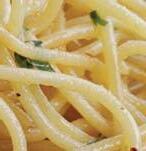

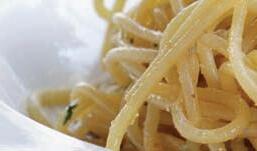
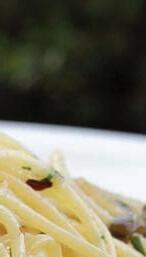
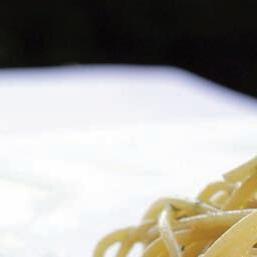

There’s money in your worn out non-stick cookware.
Just bring your ready-to-retire pan into our store for recycling between now and October 15th, and we’ll give you 30% off the retail price of any piece of cast iron, stainless, or ceramic cookware.
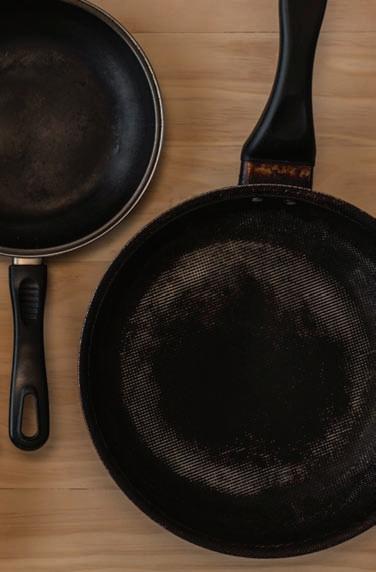
Truly



experiences are created when extraordinary food is shared with those closest to you in an atmosphere unlike any other – and that is what makes dining at the seaside Oak Bay Beach Hotel truly unique.


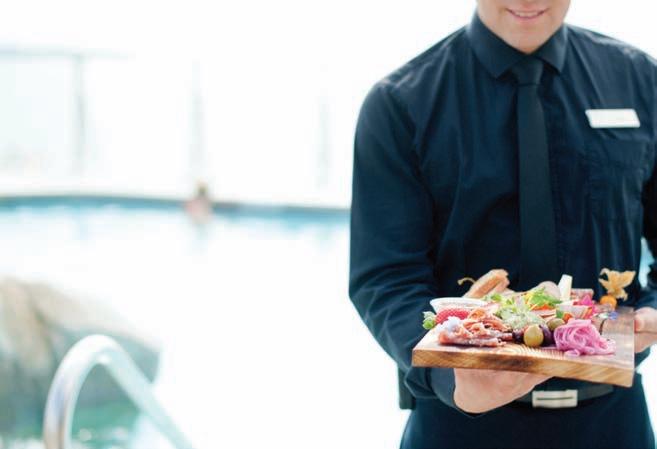
It’s a healthy saving on a healthier way to cook.
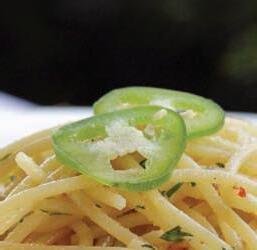























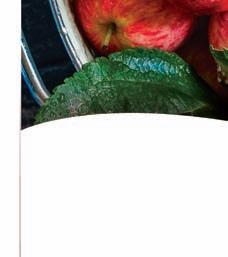
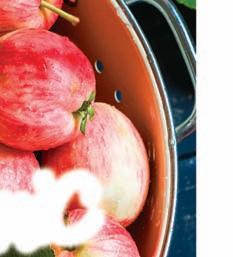

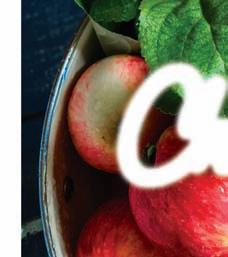
When I was a youngster, my mother used to admonish me to “eat my greens” because they were good for me. Nutritional scientists have since proven mom right, but they’ve also discovered she was remiss in not telling me to “eat my purples,” too. Emerging research indicates purple plant foods are not only equal to their green counterparts when it comes to enhancing human health—they may even be superior. That’s right—purple edibles (including those with hints of black and/or blue) are chockful of flavonoids and polyphenols that have been shown to pack a strong disease-fighting punch. We need to be eating more of them, and here’s why. While scientists have discovered an array of beneficial phytochemicals in royally hued foods, there are three superstars that seem to be particularly potent when it comes to keeping us healthy. A closer look reveals their salubrious effects.





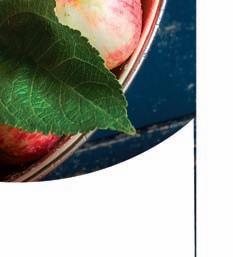

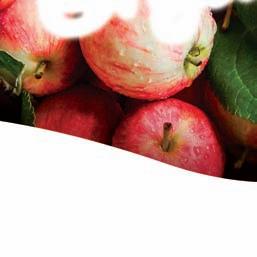
This polyphenol is a true cancer foe—it’s been shown to inhibit tumor growth and cause apoptosis (cell death) in human cancer cells. A growing body of evidence suggests it also helps modulate the immune system and increases natural killer cells that work against viruses and other infections. What’s more, studies reveal the hard-working compound can also reduce hypertension, protect against the neuroinflammation associated with Alzheimer’s disease and reduce the risk for cardiovascular disease. There’s even more good news— resveratrol has also been shown to improve blood sugar control in diabetes.
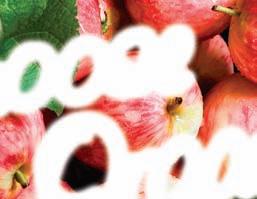





Ever wonder what gives purple foods their jewel-toned colour? You can thank anthocyanins, a group of flavonoids that act like stealth bombers when it comes to battling ailments. European researchers conducted a European-wide, 10-year study and found that anthocyanin-rich diets proved beneficial against a number of chronic conditions. Their findings, backed by a plethora of previous research, indicate anthocyanins can help knock out certain cancers, reduce the risk for cardiovascular disease and slow age-related cognitive decline, bone loss and agerelated ocular disease. If that’s not enough to impress you, consider this—the potent pigments have also been shown to reduce inflammation and improve lung function in the elderly!















Meet inflammation’s worst nightmare. Yep—the white-coat crowd has discovered this phenol has strong anti-inflammatory properties and can help modulate the onset and severity of arthritis. The health benefits of ellagic acid don’t end there, however. The benevolent phytochemical also reduces the risk for cancer, slows down the development of neurodegenerative disorders, possesses anti-ulcer properties, offers liver and cartilage protection and has therapeutic effects in the management of inflammatory bowel disease.
Clearly, incorporating purple foods into your diet is a prudent, health-enhancing move. The good news is—it’s also a delicious one. Consider the cornucopia of scrumptious, darkly hued goodies there are to choose from—acai and various other berries, black beans, purple cabbage, eggplant, black figs, grapes, purple onions, plums, prunes, black rice and more.
My research into huevos rancheros’ origins turned up a six-song playlist by a group of the same name and a tongue-in-cheek “fairy tale” about King and Queen Huevo. I also came across Mel Brooks’ favourite huevos rancheros (Saveur) at Kay and Dave’s in Santa Monica, and author Hunter S. Thompson’s penchant for downing huevos rancheros with half a pound of bacon and a bottle of gin no earlier than three in the afternoon (Paper and Salt). Wikipedia offers a brief historical account of how Mexican agricultural workers would assuage a gnawing hunger mid-morning with huevos rancheros. I envision the tough labourers seeking shade, then digging into a stack of handmade corn tortillas, fried farm eggs, piquant tomato sauce and a large pan of frijoles (beans) refried in lard.
I shy away lately from ordering huevos rancheros. Too often, eateries pay little heed to ingredients, preparation and presentation. A muddle of greasy eggs, beans pummelled into paste, bland tortillas, sour cream and/or Cheddar cheese, guacamole and a too-thick puddle of sauce is not my idea of huevos rancheros. Although a rustic, casual dish, it’s vital that each ingredient tastes of what it is and looks attractive on the plate.
At Bacon and Eggs in Walla Walla, Washington, huevos rancheros are blessedly unfussy. Two deep yellowyoked eggs (I order soft poached. They are perfect) sit on two lightly fried corn tortillas dressed lightly with tangy tomato sauce. A scattering of queso fresco over refried black beans (that still look like beans) offers a delicious combo of salty earthy flavours. Lime wedges and pico de gallo nestled among a few crunchy iceberg lettuce leaves provide a simple garnish. A single charred poblano pepper kicks the whole thing up with a hit of smoky heat. The dish is at once creamy, crunchy and deliciously zesty. For me, this is huevos rancheros.
I give them a go en casa. Roasted roma tomatoes, white onion, a garlic clove and serrano and/or jalapeño pepper are blitzed into a zippy sauce. I’ve brought locally made corn tortillas back with me from Walla Walla. For the frijoles, I soak small red beans overnight, then simmer them in gently boiling water for about an hour. To avoid frying them in lard, I prepare them almost risotto-style by sautéing onion in a small amount of olive oil, adding the beans with some of the “bean” water and stirring the mixture until the water is absorbed. The savoury frijoles are refried in a touch of oil just prior to serving along sauced eggs and tortillas. Being a cilantro aficionado, I toss a few leaves over the finished dish.
After watching an episode of the terrific Netflix series Chef’s Table profiling renowned Mexican chef Enrique




JALAPEÑOS
Hot peppers have thinner walls and a spicy, pungent flavor. This flavor is caused by the alkaloid capsaicin, which is produced in the fruit's membranes. Botanically, there is no difference between jalapenos and chili peppers.
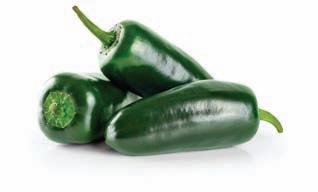

Olvera (of Mexico City’s Pujol restaurant), I look to see if he “does” huevos rancheros. His Huevos con hoja santa y ranchera salsa (available online) sounds marvellous and marvellously simple. The top note is fried hoja santa, a large leafy herb with a peppery, anise flavour. I’m bent on seeking it out when next in Washington state.

For huevos rancheros this side of the border, Victoria folk can check out Jam Café, which serves theirs up with tomatillo salsa, jalapeño sour cream, homemade cornbread and chorizo. (Bacon and Eggs also offers cornbread and chorizo as side dishes.)
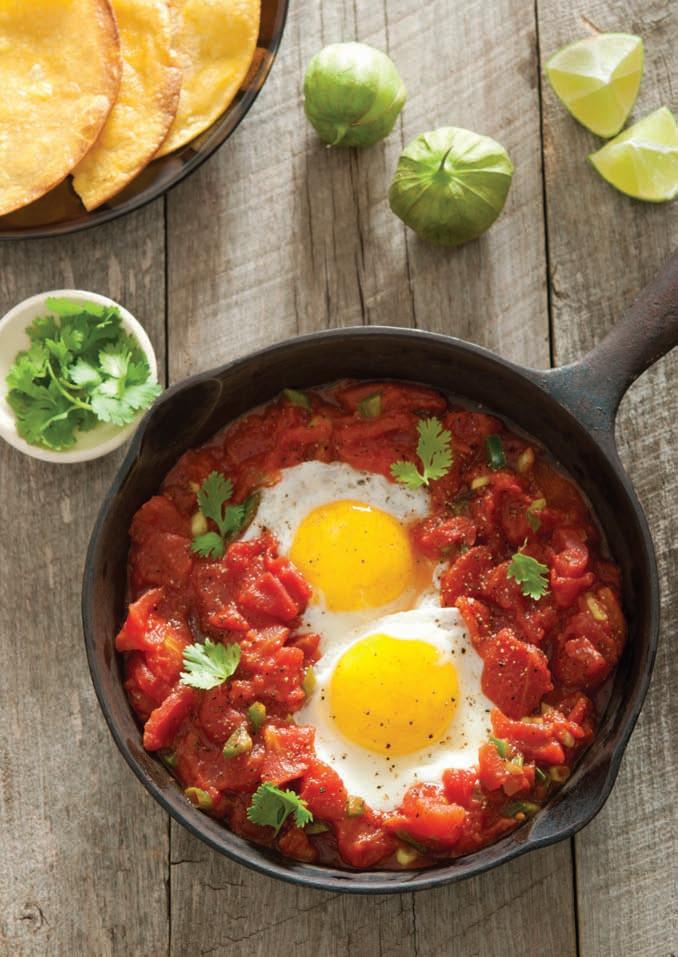
And at this writing, Vancouver restaurateur James Iranzad (Wildebeest, Bufala) had just replaced Supermarine with the 36-seat Lucky Taco cantina in Kitsilano. The weekend huevos rancheros, a neat stack of tortillas, eggs, sauce, beans, cheese and guac, looks most promising. (Mel should get an invite.) The two eateries prove there’s no reason for huevos rancheros to be sloppy overkill. No reason either for Thompson’s bottle of gin to wash ’em down. But a spicy Caesar garnished with a crisp bacon rasher and a spicy pickled bean is rather good.
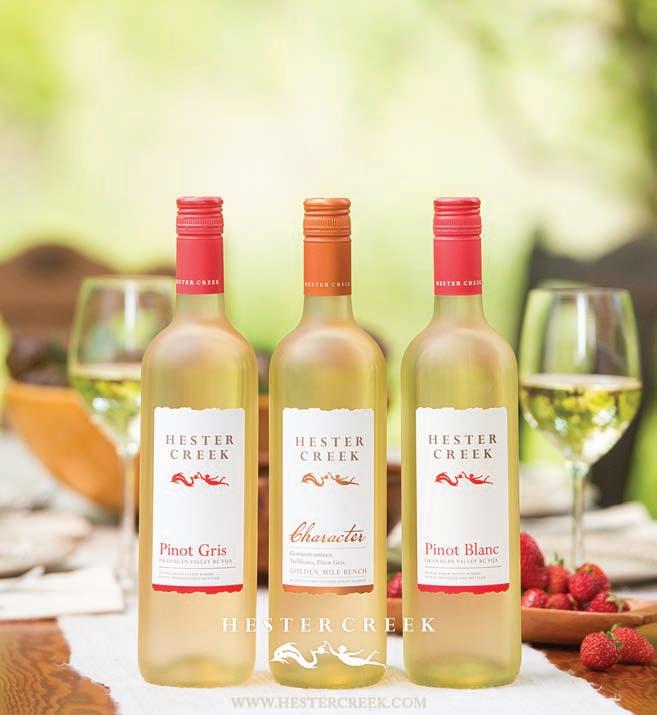

Know thy pears and be rewarded.
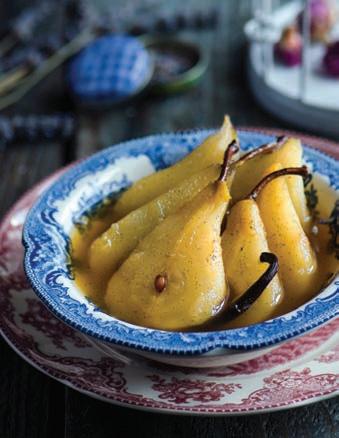


Ralph Waldo Emerson said, “There are only ten minutes in the life of a pear when it is perfect to eat.” Perhaps an exaggeration, but closer to the truth than you may believe. The pear is a complex, darling thing. It requires tender loving care and will perform exquisitely if given the appropriate stage. Throw it in a lunch box and it will give you the produce equivalent of a temper tantrum. The pear is the prima donna of produce; but choose wisely, care for accordingly, use appropriately, and you will be rewarded magnificently.
Flourishing in B.C., pears are bountiful, particularly in the growing regions of the Okanagan with their colder winters. You can of course grow pears here (the Comice variety grows particularly well) on Vancouver Island, and please do. The secret, they say, is in the timing of the harvest. Unlike some tree fruit that is harvested underripe to accommodate transport, the pear must
be picked early and ripened off the tree to accomplish that juicy, dreamy, perfectly ripe pear texture that we love. A pear harvested too late in the ripening process will develop a gritty texture most try to avoid.
A tip from the front lines: Choose the right pear for your needs (baking, salad, poaching, cheeseboard) and take a hint from the growers; don’t squeeze the pears at the market to find the perfect one, unless you plan to eat it in the car on the way home. Select firm pears and ripen them on your counter. This is really the only way to ensure that you get to savour those ten minutes of pear glory.
More than 3,000 varieties of pears grow worldwide, but of the industrialized varieties, three (Bartlett, Bosc and D’Anjou) dominate the category. Due to B.C.’s growing conditions, we are lucky to often have 8-10 varieties to choose from at the produce market.
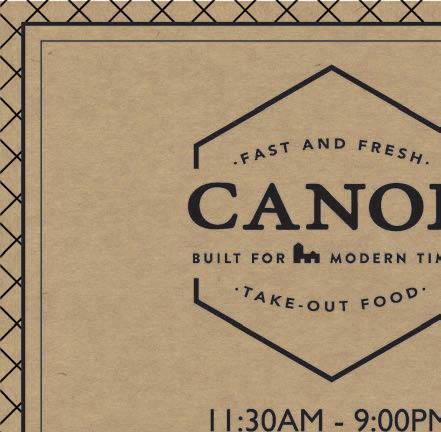
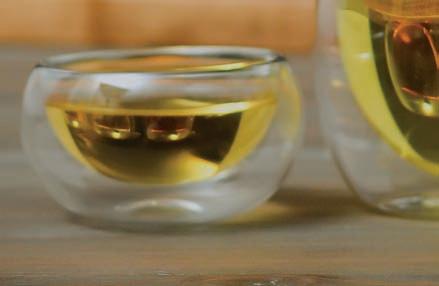
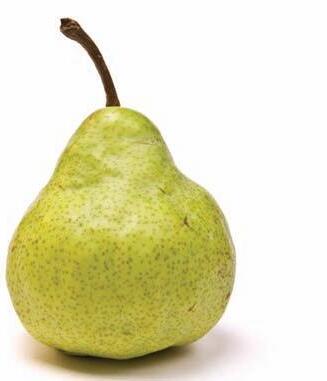
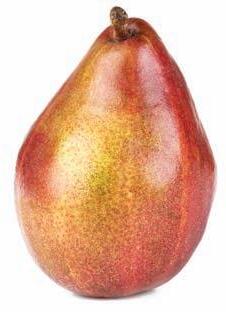

BARTLETT
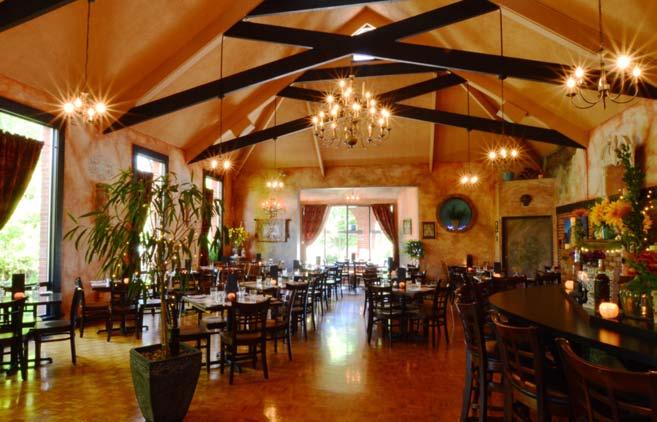
Number-one seller, early variety. Mild, sweet and thin-skinned. Enjoy raw, great in salads, ideal for canning when slightly underripe, great for cooking but does not hold its shape.
HARROW SWEET

A cross between Bartlett and Purdue varieties. Sweet and juicy with excellent flavour. Best eaten raw, but can be cooked when underripe.
CONCORDE


A cross between the Conference and Comice. Beautifully shaped with a long neck. A firm texture makes it a great cooking pear that won’t fall apart.
ASIAN PEARS

Ya pear and Singo are most commonly available. Round in shape and best eaten raw out of hand. Known for their crisp, juicy texture.
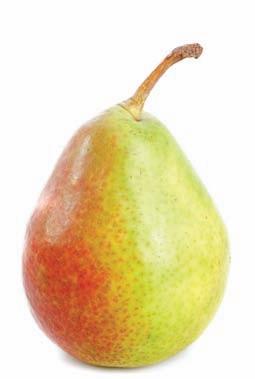
COMICE
A smaller round pear, richly sweet with excellent flavour known for their silky smooth texture. Great for eating raw, in salads, paired with cheese and for baking.
BOSC

Bold and earthy with firm thick flesh. Ideal baking and poaching pear as it holds its shape when cooked.
D’ANJOU (green and red varieties)
An egg-shaped winter pear. Very juicy, but firm and mellow in flavour. Great eaten raw and holds its shape when cooked.
PACKHAM
Similar to the Bartlett and increasing in popularity. Very versatile with juicy, sweet flesh that’s best eaten raw.

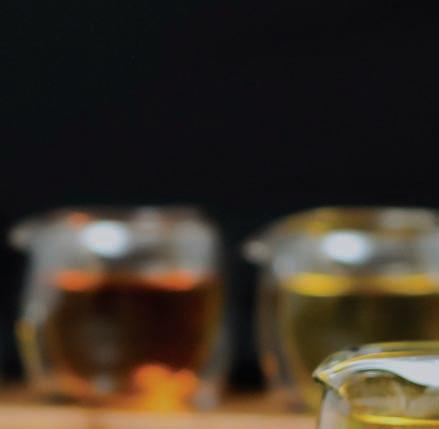


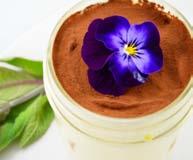
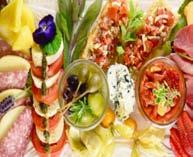
Shelora Sheldan
Joseph Blake
PHOTOGRAPHY
Rebecca Wellman
LITTLE TREASURES
From left to right:
Taiwanese Classic - Grilled pork belly with sweet peanut powder and pickled onion, Banh Mi - Pork meatballs with spicy nuoc pickles; Buttermilk Fried Chicken with spicy mayo and scallions.

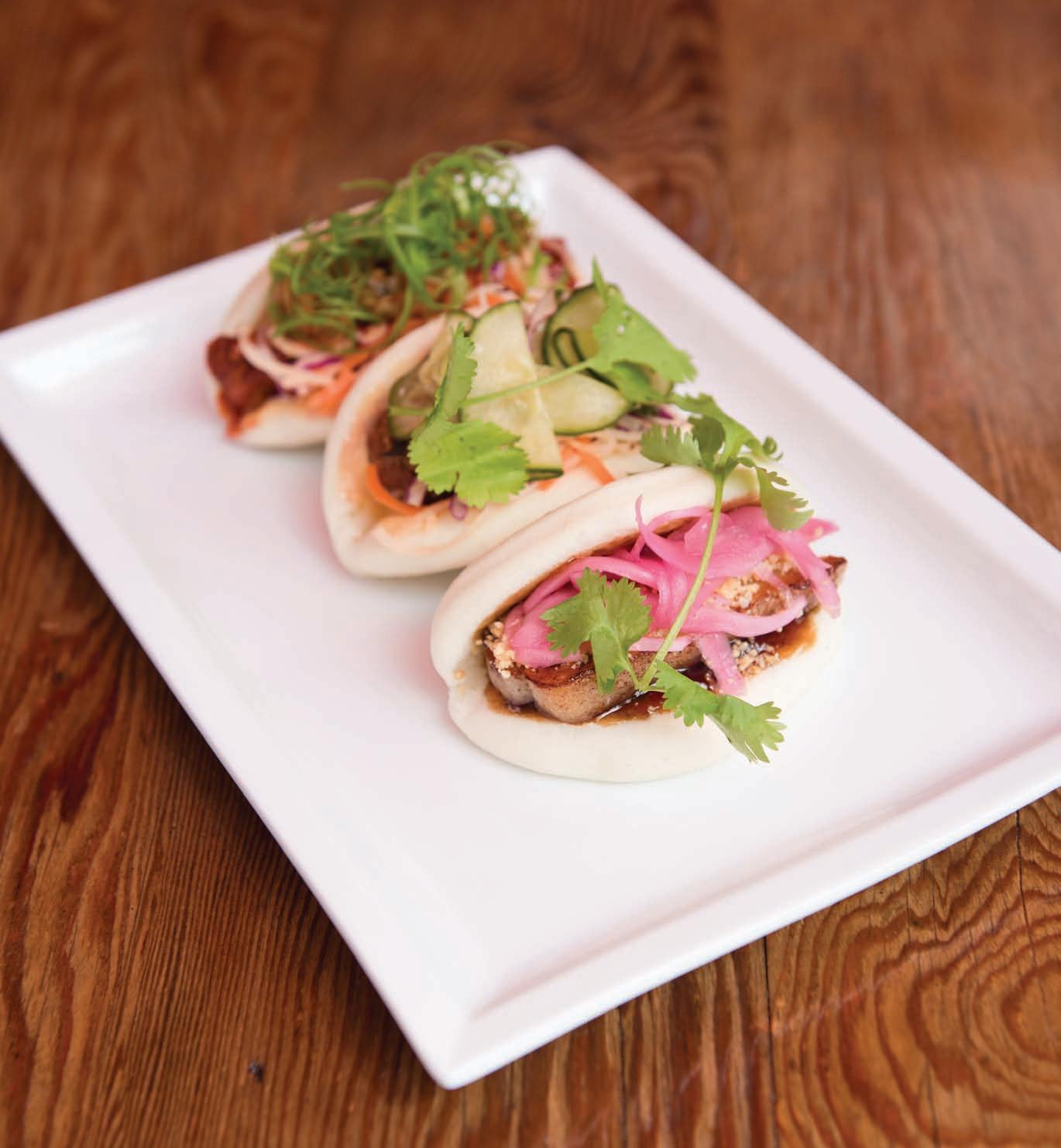
BAO, CHINESE STEAMED BUNS, ARE LOVELY half-moon shapes as light as clouds. Small enough to fit into your hand, their versatility as a vessel makes them ideal for conveying an infinite number of cooking styles and ingredients.
Arthur Webb and Kylie Arnot-Webb were so inspired by the bao’s potential they named their first restaurant in its honour.
It’s fittingly located in the heart of Chinatown, in the original location of the stir-fry wok-tossing empire, Noodle Box. The space is familiar to the Webbs. In 2004, they joined the Noodle Box team, working with founders Nick Crooks and Jodi Mann. When the company sold, they continued on with the new owners, managing and training staff, building manuals and operational guides, and opening several Alberta locations for the nowfranchised company. With an arsenal of experience and business acumen behind them, the 30-something couple yearned for something smaller, something new.
“We love ramen, and everything street food,” says Arthur, who heads up the kitchen. “We’d been to Thailand three times,” he explains. “And after so many years at Noodle Box, we wanted to do something different, and the fusion potential for bao is massive!”
They also yearned to move back to Victoria. Their dream
quickly became a reality when the Fisgard location came up for grabs. In two short weeks, with the aid of family and friends, the 26-seat space was scrubbed, scoured, painted and opened for business.
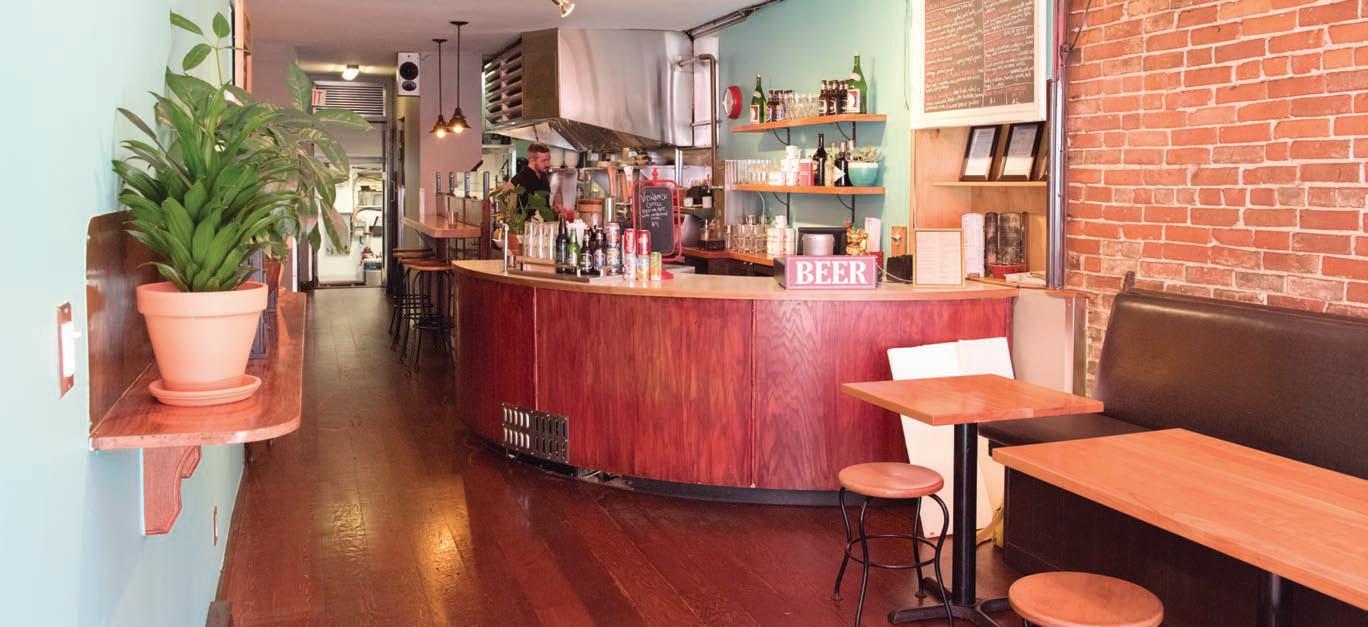
Six varieties of the little treasures are on offer, steamed and stuffed to order, drawing influences from all over Asia.
Sold individually, or in sets of three, the Taiwanese classic of caramelized pork belly sets the tone for adventure with a hit of hoisin, pickled onion for crunch, house-made kimchi for umami funk and finished with a showering of sweet peanut powder. Another bao, inspired by the Vietnamese banh mi, layers pork meatballs with pork pâté treated with a hit of house spicy nuoc cham pickles with slaw, spicy mayo and aromatic fresh cilantro. All wonderful and satisfy for lunch, an afternoon on-the-go snack or late- night craving.
Two bibimbap, Korean rice dishes, round out the menu, plus two noodle dishes. One, a “shallow ramen,” is buoyed by flavourful chicken broth with juicy ground pork, garlic, shallots, fried soy beans and Lao Gan Ma, a moreish Chinese condiment of ground chilies and peanuts. The second, a hearty dish of wok-fried rice noodles with curry, gai lan, Loy Sing barbecue pork,
prawns, tofu and egg, with gluten free or vegan options. Arthur shows a real affinity for combining flavours and techniques, as well as a respect for ingredients. A sense of fun also comes into play, with crispy General Tso’s chicken wings, a salute to that iconic dish, and the deepfried egg on the bibimbap, a nod to influential chef David Chang.
Beyond the menu, connection to community is important for the couple. Fisgard Market provides fresh produce (and that Lao Gan Ma), Loy Sing provides fresh and barbecued pork, and Vancouver’s Hon’s makes the bao, a vegan version that’s free of the usual milk powder. Libations, too, stay local, and honey—from the Webbs’ own beehives—provides sweet notes for cocktails and sauces.
The couple’s enthusiasm, focus and sense of adventure is palpable, offering great eating matched with warm hospitality, consistency and value. These are some of the hallmarks of success and Băo hits all the right notes.
“WE LOVE RAMEN, AND EVERYTHING STREET FOOD ”
ARTHUR WEBB



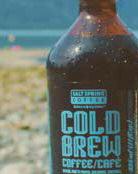



THE COFFEE SHOP HAS BECOME AN IMPORTANT meeting place in our culture. Not just to get caffeinated before work, or during a break, but to meet up with a friend, schedule a casual business meeting or work at your laptop. More important, it’s a place to connect with the neighbourhood, your tribe or your favourite barista, to exchange pleasantries or the latest gossip.
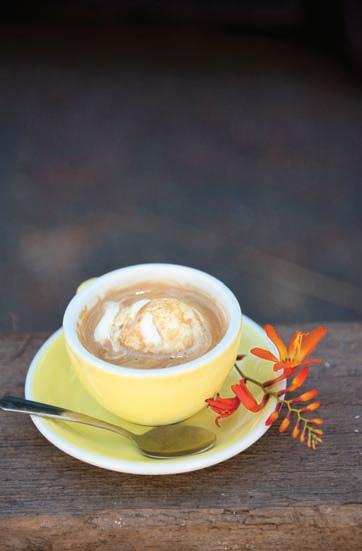
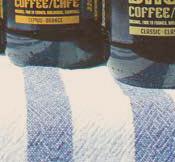
In a quiet section of Fairfield, tucked away in the courtyard behind a pharmacy, is one such meeting place. Branch Coffee is the first in the neighbourhood, and the first venture by polymaths Caleb Beyers and Hanahlie Beise. The husband-andwife team behind Caste Projects, a creative think-tank, their work reflects a wide range of collaborative design and branding, including Famous Original and Hoyne Brewing. “We love food and coffee,” says Beyers, “and the whole idea behind Branch is close to our hearts.”
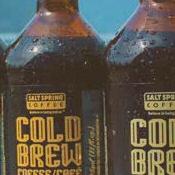
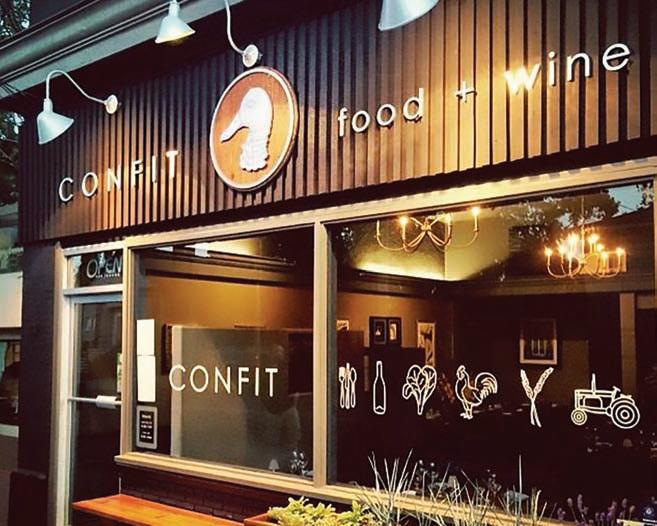
Beyers designed the 200-square-foot interior, and Beise and the Aryze team provided input. The interior is light and airy considering the size. A large window looks out to the sun-filled patio where bench seating and picnic tables invite conversation. The patio flooring was made from wood repurposed from the Oak Bay Marina, and interior flooring was sourced from leftovers from a construction project. The feel is modern and welcoming. Bows and Arrows provide the beans, with coffee
served in bright yellow cups and saucers. Culture kombucha is on tap, and a carefully curated selection from passionate local producers rounds out the tiny menu: Le Petit Chèvre artisan baking, Terroir Teas, cookies from Salt & Pepper Fox and ice cream from 49 Below (the cinnamon ice cream in the affogato is outstanding!) A small toaster oven pumps out sweet and savoury toasts, such as Le Petit Chèvre’s toasted sesame bagels with lavender butter, or cheese on toast with herbed pesto. Behind the counter is manager Julia Schenck, a friend of the couple’s who keeps the vibe spirited and friendly and pours excellent shots via a shiny new La Marzocco machine. The other charm at Branch is the lending library, set up like the leave-a-book-take-a-book structures in many neighbourhoods of the city. Like the library, this is referred to as the “Fairfield Branch,” and the couple have a master plan of opening up similar coffee shops in other areas of the city underserved by good coffee as “gathering places to bring friends, have a children’s birthday party and a conversation with the community,” says Beyers.
Even though this Branch isn’t in my neighbourhood, I’m already a regular. I come for the conversation, the books and, most important, the great coffee.
includes a variety of Bennys, omelettes, soup, salad and sandwiches. John Catucci of the Food Network’s You Gotta Eat Here! visited Victoria in March for a feature on the city’s love affair with brunch and raved about The Village’s Sweet Cheese Blintz and Red Shakshuka, a cumin-spiced tomato stew with garlicsautéed greens and two poached eggs.
During our recent meal, my wife was equally impressed with her Village Salad of grated beets and carrots, chickpeas, toasted almonds, sunflower seeds and feta cheese on a bed of local, organic greens with curried balsamic dressing.
BRIAN BOBIAK GREW UP IN GORDON HEAD AND spent his school years working part-time slicing meat at the venerable Mt. Douglas Market. He’s proud of his neighbourhood roots, and it came up often as we visited recently on the patio of the 32-year-old’s latest venture, The Village at Torquay.
“We’ve got a network of gardens and small, urban farms called Village Grow Show that produce organic salad greens, kale, beets, snap peas, carrots and a dozen other fruits and vegetables for our restaurant,” Bobiak adds enthusiastically. “All our food scraps are composted by our organic growers too.”
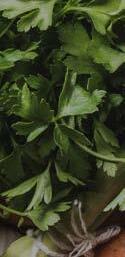


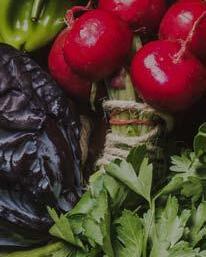

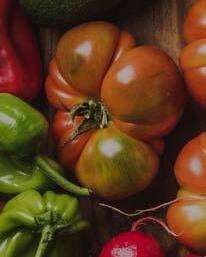

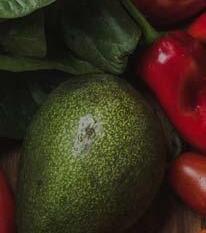

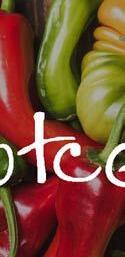
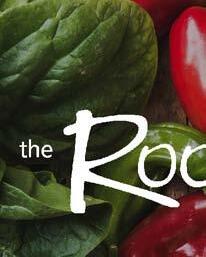
Sitting in the glass-enclosed, 20-seat patio with Mt. Doug’s round bulk looming on the horizon, I tuck into a juicy Montreal Smoked Beef Sandwich after slathering it with house-made mustard. An example of the Jewish food tradition at the heart of The Village menu (which also includes latkes, blintzes and shakshuka), my smoked meat sandwich on Portofino light rye is a tasty reminder of Montreal’s Schwartz’s and Snowden Delicatessens and that city’s greatest gift to Canadian cuisine.
Chef/co-owner Kyle Campbell worked with Bobiak at the Marriott and adds to the three Village restaurants’ shared menu with a Torquay Village fresh sheet inspired by their local growers. During my visit, Campbell’s fresh sheet included Orange Curried Shak (roasted yam, butternut squash, carrot, onion and braised beet greens topped with two poached Abby Lane eggs and goat cheese and served with grilled naan bread) and Backyard Hash (Choux sausage, sweet bell peppers, red onion and kale topped with two poached eggs and Hollandaise mixed with house-made 3 Drop Hot Sauce.)
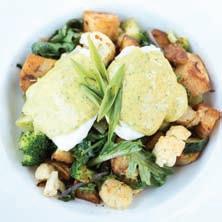
The Village offers a breakfast and lunch menu that
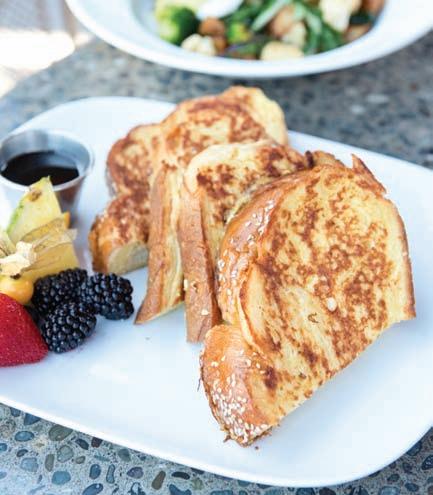
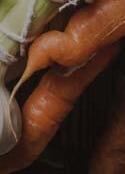
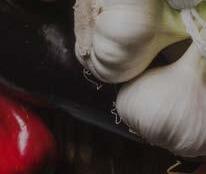
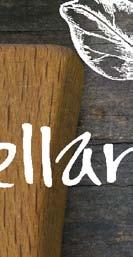
There are 22 seats at tables inside the new Village, wood flooring and rough cedar panelled walls. One wall is festooned with a dozen black ball caps with the bistro’s “Hood” brand.







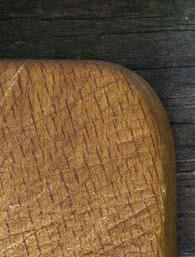



“We always called it Gordon Hood instead of Gordon Head when we were kids,” Bobiak chuckles. “I really love my neighbourhood and thought it would make a cool branding tool. And we sell a lot of caps, so our customers must think so too.”
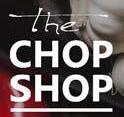 JOSEPH BLAKE
JOSEPH BLAKE
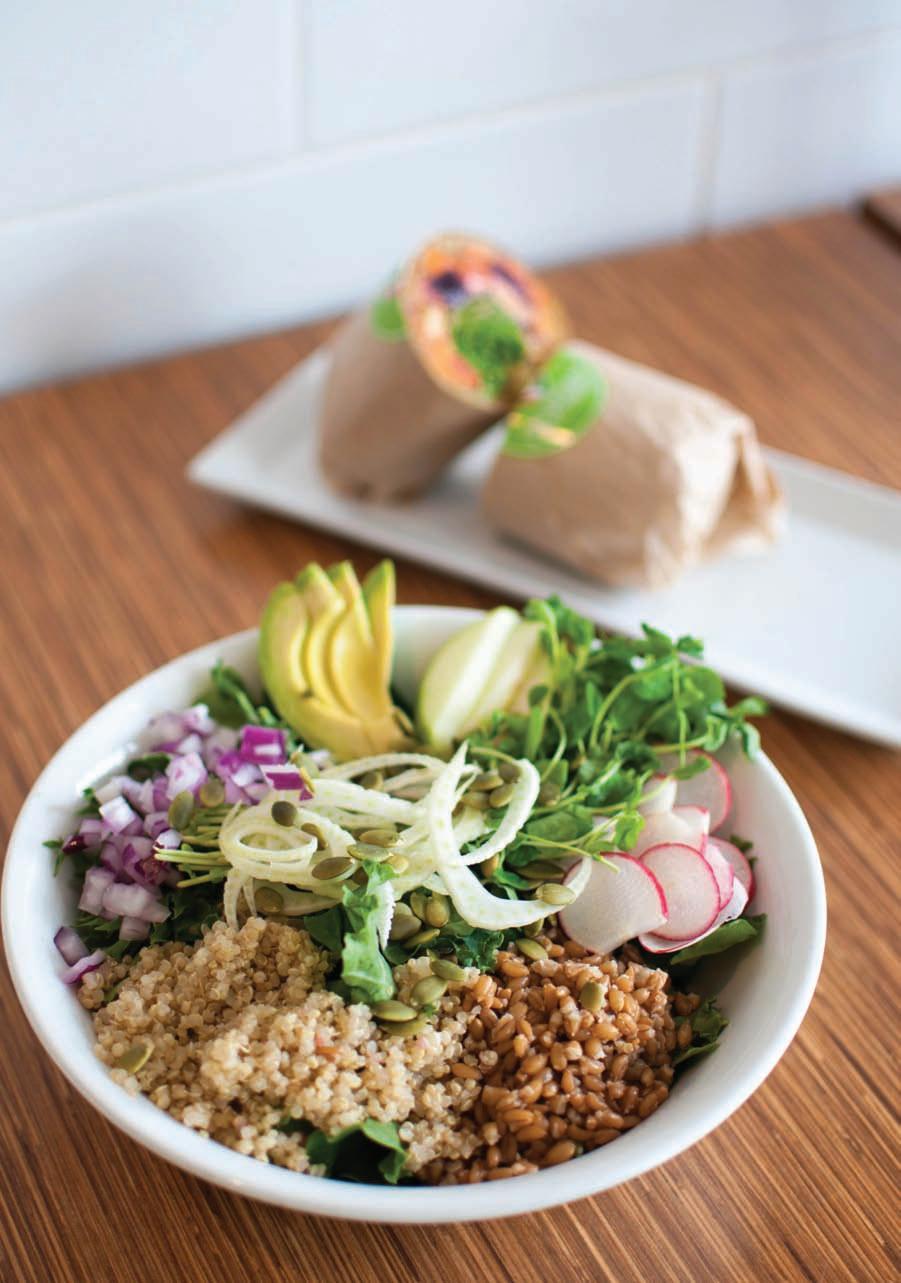
202-3749 SHELBOURNE ST., | 778-265-7785
FRESHCOASTHEALTHFOODBAR.COM

There’s a healthy theme with the pure, creative and sustainable foods at Fresh Coast Health Food Bar. At first glance the menu seems standard for a health food restaurant, with its categories of burritos, bowls, salads and smoothies, but the romance is in the details. The Ten Mile Bowl for $11 is a verdant glade of kale, artisan greens, shaved fennel, sliced radish and fanned avocado wedges surrounding a bouquet of pea shoots. This sits atop a giant bowl of quinoa and farro, an ancient wheat grain, and is topped with a miso or pesto balsamic dressing. If you enjoy trying new flavours, you will find the use of aquafaba intriguing as well. Aquafaba is the liquid left from soaking legumes like chickpeas. I know. Initially it sounds unappetizing. But Fresh Coast is using it to replace the almonds they used to use in dressings because almonds are not a sustainable food, as each almond requires one litre of water to produce. And I never would have known the difference when I enjoyed the rich Aquafaba Curry Dressing that dressed the roasted yam and beets in my Juan de Fuca Wrap, also for $11.
Finally, I couldn’t leave without trying a smoothie. I was initially startled by the $10 price of my Alert Bay Smoothie, until I realized that it is filling enough for a meal replacement, and the ingredients are costly. This smoothie blends bee pollen, matcha, cashews, bananas, dates and chocolate, resulting in something that tastes like a chocolate treat but is full of nutrients. Though the focus of this “food bar” is healthy eating, there are treats to be had at the frozen yogurt bar in the back, with some fun candy toppings. But the creativity doesn’t end at the frozen yogurt. The Avocado Basil Frozen Yogurt is a sophisticated dessert, with sweetness and creaminess coming from the avocado, and the basil adding a grassy and floral note. Eating here was more than a tasty experience; it was an education.













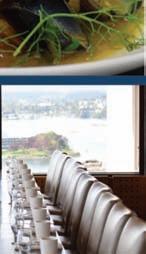
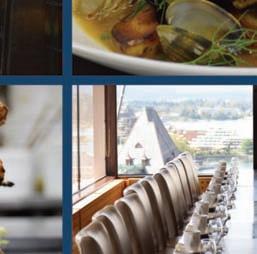

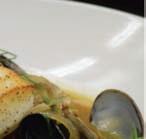



The mission of Fit Fix Café is not to fix fit people; it is to give fit people (and people like me) their fix of healthy food to support a balanced lifestyle. Jakub Kalich and Cyntra Mootoo have brought to Victoria a concept seen in their native Edmonton. There, it is common for gyms to have a food purveyor attached, providing healthy meals to take home. To mirror that concept, here in Victoria the two have positioned themselves downtown close to a few gyms so health-conscious people can eat in at the casual café, get dinners to go or pick up their three-day orders for the fridge.
But a concept can’t fly without good food. The Moroccan Chickpea Soup is absolutely delicious, and vegan to boot. It is so hearty and laden with chickpeas that I can also imagine serving it in a rice bowl as a curry. The soup is redolent with cinnamon and cumin and is served with a splash of olive oil and a sprinkle of cilantro and sesame seeds. This is a complex and filling soup for $6. The steak dinner features meat from Slater’s Butcher Shop,
seared and served pink, with a medley of crisp vegetables enlivened with a dash of apple cider as a seasoning. The roasted sweet potatoes that come with the dish are flavoured with sweet paprika and topped with guacamole, which turned out to be a great combination –why had I never thought to do that at home?
The Chicken Satay dinner was just as flavourful—you can taste that the lemongrass, ginger and garlic are all fresh. The entrees range from $8 to $12, whether you eat in or take out. Every meal is balanced to a 40/40/20 ratio of protein, carbs and fat, and is gluten-free. There is something for everyone, whether you are motivated by fitness or simply flavour.
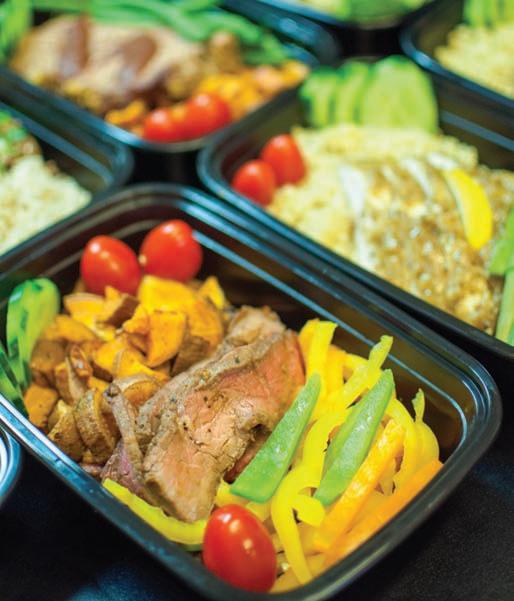
Inside round steak, Roasted sweet potatoes and blanched mixed peppers
ELIZABETH NYLAND




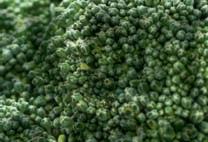

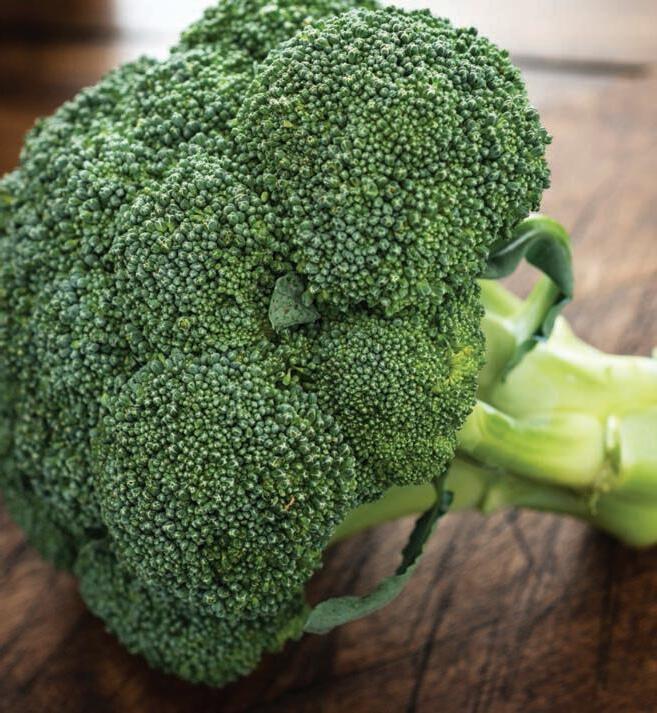

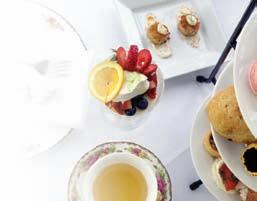






For a big meal at well under $10, look no farther than your local Red Barn Market. And they are getting increasingly local as more and more open. Yes, they are famous for their monster sandwiches, but let’s start with offerings earlier in the day. Red Barn also does a “Bun on the Run” breakfast sandwich starting at 6:30 a.m. For $6.50, you get a kaiser or ciabatta bun loaded with two eggs, bacon or ham, and cheese, as well as whatever vegetables you choose from the sandwich bar. As a point of interest, a flimsy Sausage McMuffin at McDonalds is $2.79, and this is twice as big and includes vegetables. Add an Oughtred coffee for $2. That alone brings me in, because I get grumpy when I feel gouged on drinks, and that is certainly not happening here.







At the Italian Bakery, we have been hand molding and baking scratch bread at the same location for 38 years. Although we are also a fine pastry and cake shop and a European caffé and Gelateria, our breads still stand out. Come and try our naturally leavened organic breads or our 100% unbleached, untreated classics. Discover our history and all our secrets at italianbakeryvictoria.com
And, oh yes, the sandwiches. In local bacon competitions, Red Barn’s is always a contender for top prize, and happily their bacon is in the sandwich bar, along with eight other meats, all from the Red Barn smokehouse on Vanalman. No fewer than 13 vegetables are available, nine different types of bread, and six sauces, with guacamole and hummus costing just a bit extra. You can create a gigantic sandwich for $6.50 and get it toasted. Red Barn now offers a hot lunch too. The day of my visit, it was a creamy mac ’n’ cheese with a crunchy crumble on top made of, you guessed it, the famous bacon. Some desserts and muffins are available too from Portofino and Victoria’s Lone Tree Bakery – the apple pie from Lone Tree was a standout. When a construction worker placing his sandwich order, he kept his instructions simple: “Load ’er up.” That sentence summarizes the value in a Red Barn meal. You can load up on a lot of healthy and local food for a really fair price.
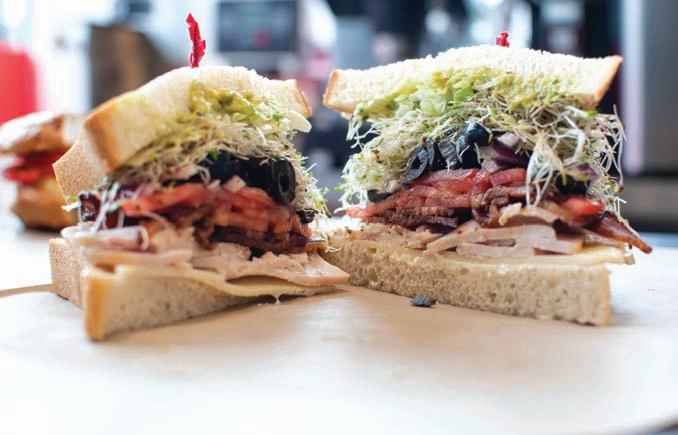

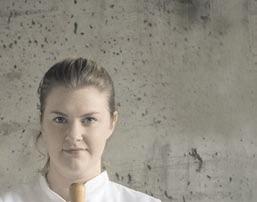




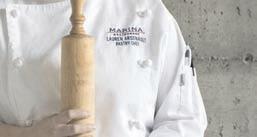












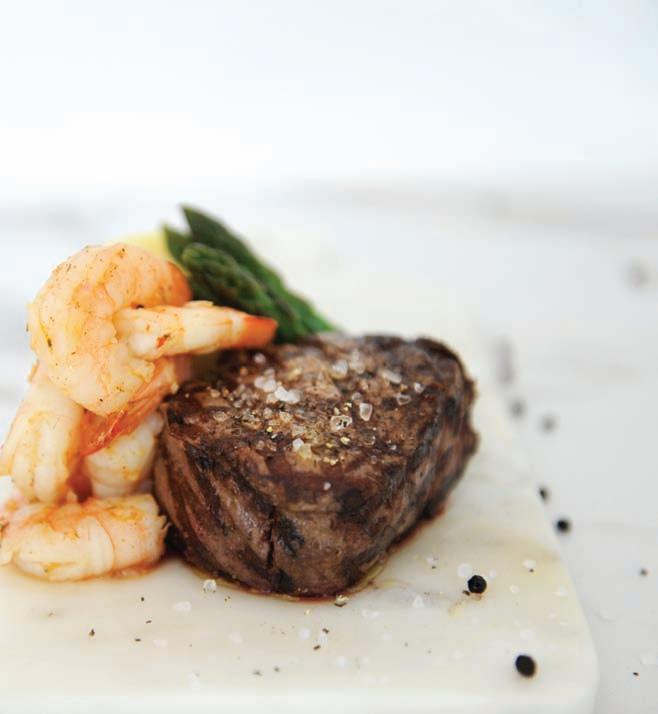





During any lunchtime in Victoria, sandwiches swiftly fly from the cutting boards, shelves and coolers of delis, bakeries and assorted cafés and restaurants. It’s a perfect food for a quick lunch, to tide you over at your computer, eat on the go or take on a picnic. Its stacked permutations are endless and choices of breads add to the infinite varieties for that perennial midday meal. There are baguettes and boules, brioches, pretzel and Portuguese buns, baps and bagels, flats of focaccia and loaves of whole wheat, rye, sourdough and white.
At Fol Epi’s organic and wood-fired bakery, 200 baguette sandwiches a day are their stock in trade. And for what owner Cliff Leir refers to as “the new white bread,” 40 to 60 kilos of dough are kneaded daily for their in-demand ciabatta buns, a favourite of Part and Parcel and Salt & Pepper Fox.
Portofino Bakery in Saanich provides breads and buns for more than 100 food service outlets in the city—I’m sure you’re familiar with their wonderful pretzel buns—and at their bustling production facility, they process an astonishing 26 tons of flour a week, with another 100 tons a year of locally grown grains, milled on site, to keep pace with their wholesale bread orders. The meal that freed us from the fork has come a long way from its origin in our collective historical belly, which dates back to the 1760s. That’s when John Montagu, the fourth Earl of Sandwich, who, too busy to stop for dinner, called for some beef between two slices of bread, and the sandwich was born.
But predating the Earl’s need for sustenance in a hurry, ingredients were still enjoyed on bread. In the Middle Ages “trenchers” were thick slabs of coarse bread used as a plate with various ingredi-
ents, usually meat, on top. At the end of the meal, the juice-soaked bread was eaten. Further back still, in the first century BC, a distinguished rabbi, Hillel the Elder, created a Passover custom of eating bitter herbs sandwiched between matzo bread. It’s a custom to this day.
Singular bread meals, like the trencher, are seen in the disc-shaped Ethiopian and Eritrean injera, a spongy sourdough flatbread topped with various stews, eaten with bits of the injera torn off and used as a scoop. The same can be said of the Indian chapati and the lavash, an Armenian flatbread, both ancient recipes predating the flour tortilla and the wrap of today.
French toast, another solo slice dish and brunch favourite, dates back to the fourth century. And let us not forget the English versions of “on toast.” Cheese on toast, or Welsh rarebit, was a childhood favourite of mine, and the first thing I learned how to cook. Grated cheddar was mixed together with an egg, dried parsley and Keen’s powdered mustard and spread over soft white bread before being broiled in the oven until the cheese bubbled and browned and the bread’s edges perfectly toasted.
Consider, too, the open-faced sandwich, tartine in French and smørrebrød in Danish. A sandwich still life if you will, the open face showcases the presentation of ingredients, with thoughtful notions of colour and texture. Chef Kunal Ghose of Fishhook serves tartines to highlight the fresh, sustainable seafood on his menu, laid out on top, not hidden and squished between slices of bread. At Brasserie L’ecole, their tartine features a blush-inducing house-made sausage, manly of proportion—a very lucky man! Shameless in its presentation, it’s laid out before you draped in nothing but a rich and creamy cheese and mustard beer sauce, atop a thick mattress of
grilled Fol Epi pain de campagne.
On the dainty side of things comes the tea sandwich, delicate two-bite savouries eaten with a pinkie finger extended, where the cucumber is queen. At the Fairmont Empress, up to 4,000 of these little darlings are made daily during high season. They make five varieties for their high tea, mini versions of the open-faced, with crusts off, along with rolled and sliced variations offering great visual appeal. One of the breads used at the Empress is the versatile long Pullman or sandwich loaf, or pain de mie, a favourite of Julia Child’s, providing uniform-shaped slices, perfect for rolling and shaping.
The type of bread used for a sandwich is of utmost importance. There’s nothing worse than biting into bread so unwieldy that the sandwich ingredients land on your lap and not in your mouth. For Roast’s famous porchetta sandwich, owners George Szasz and Ryan and Maryanne Carmack hunted for the perfect light and fluffy bun to transport all that porky goodness, without cutting into one’s gums or taking away from the roasted meat’s starring role. After taste-testing every kind of bun in the city, including ciabatta, they settled on a custom Casa Nova Portuguese bun that holds the ingredients so perfectly you could almost eat it with one hand.
Let’s reflect on the history of sandwich artistry and invention. The Jewish delis brought us pastrami and corned beef on rye, Montrealsmoked meat and lox, bagels and cream cheese. The multi-layered Dagwood and the hoagie or hero led the way to the submarine. When Victoria’s Sam Bawlf opened Sam’s Deli in 1972, predating Subway, he was on track with the start of the have-it-your-way trend of customers dictating condiments and ingredients on their daily bread. Thank New Orleans for the muffaletta and the oyster po-boy. And the French croquemadame and monsieur and its American version, the Monte Cristo, gave us grilled and melty goodness that flowed into melts: tuna, patty, turkey and, of course, cheese. The classics of luncheonettes and diners endure: Sloppy Joe, beef dip, the cheesesteak, the Denver, the Reuben and Clubhouse. The initialled PBJ (peanut butter and jelly), the BLT (bacon, lettuce and tomato) and its derivatives the BLAT (bacon, lettuce, avocado and tomato), and the BELTCH (bacon, egg, lettuce, tomato, cheese and ham), to the modernday grotesqueries like the KFC here Double Down, all have their diehard fans and place in sandwich society. From the British chip butty to
the Indian vada pav, the Argentinian choripán, the Spanish bocadillo, the Mexican mollete, the Vietnamese báhn mi and the torta Cubano, the sandwich’s democratic and global appeal boggles the mind. Whether you like your sandwich multi-layered or simple, with or without aioli or with extra Dijon, on a bun or two slices, whole wheat or sourdough, grilled or toasted, a classic from the past or something of your own invention, these hand-held creations fit the bill, for any occasion and at any time of day. The Earl would be impressed.
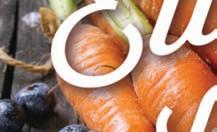
CALL THEM PANINI, SAMMIES OR SANDWICHES, HERE’S A TINY PLATTER OF VICTORIA FAVOURITES THAT CELEBRATES THE SANDWICH BOTH CLASSIC AND NEW.
Pizzeria Prima Strada heralded Victoria’s first authentic Neopolitan wood-fired pies—and mille grazie for that!— setting five-star standards for pizzas with the right chew and char crust topped with quality ingredients. That said, the slow-fermented dough makes a killer vessel for their meatball sandwich, a slightly toasted showboat of three polpetti riding a wave of deeply rich tomato sauce. These are not leaden spheres but delicate, yielding orbs shaped from a trio of beef, pork and house-made fennel sausage, made ethereal with the addition of fresh herbs, milksoaked bread and eggs before being braised in tomato sauce. Topped off with arugula for brightness and shavings of parmesan, it’s amore consummate.
PIZZERIAPRIMASTRADA.COM
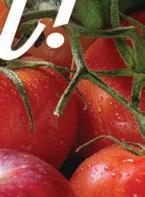

At Jam Café—a temple to diner-inspired fare such as rich and hearty mile-high stacks of luscious pancakes and hollandaise-slathered Bennys—the classic hot Reuben sandwich fits right in. Attributed to Omaha-native Reuben Kulakofsky back in the 1920s as a creation for his weekly poker group, Jam’s version is all aces with two slices of dark European rye securing seven ounces of steamy Montreal smoked meat, sauerkraut, house-made Russian dressing and Swiss cheese. The resulting big stack is grilled to order, ensuring the perfect ratio of meaty-juicy-melty and toasty. Presented with a giant pickle and your choice of salad or matchstick fries, this deal is not for small bet players.
JAMCAFES.COM
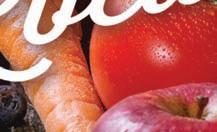
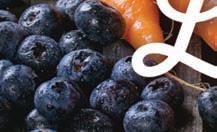
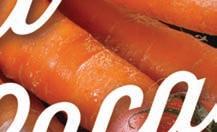
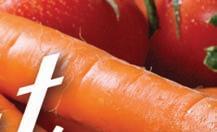




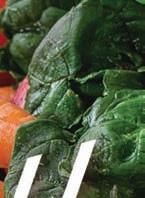
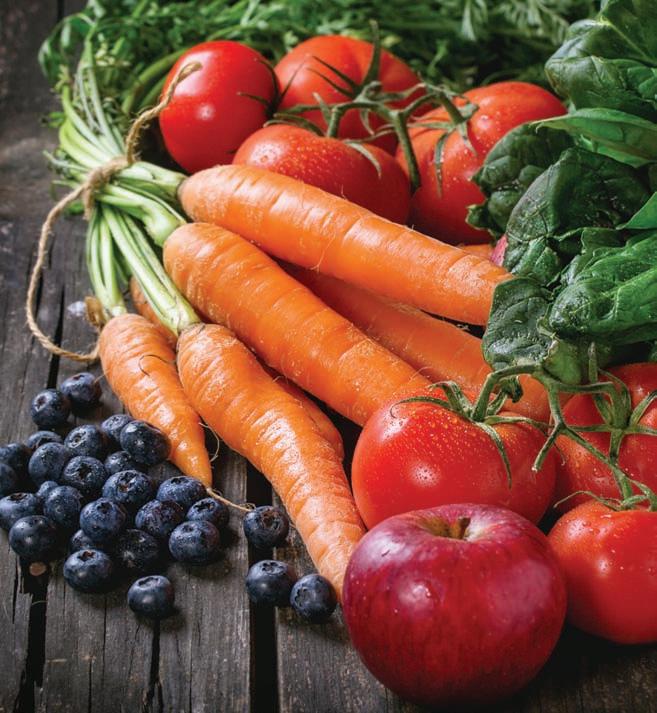
Dinner: Tuesday – Saturday 5pm till late







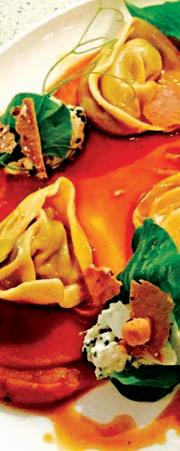

Brunch: Saturday & Sunday 10 – 2pm
Closed Monday

Chef Liam Quinn of Salt and Pepper Fox delivers the goods, relieving you of the stress of fighting the hoards for a satisfying sandwich lunch. Showcasing organic and locally sourced ingredients, this is door-to-door service elevated. Just order the day ahead and choose from six sandwiches made on Fol Epi ciabatta, with healthy salads and cookies for extra measure. While I’m down with the roast chicken paired with creamy, fatty Havarti cheese and an edge-to-edge layer of sage aioli and pickled onions, I’m a sucker for an egg salad. Quinn’s version links Haliburton Farm hard-boiled eggs and a good dose of aioli with white cheddar and that old-school green, iceberg lettuce.
SALTANDPEPPERFOX.COM

The Segato brothers and crew at the Italian Food Imports swiftly juggle multi-layered varieties of panini, making upwards of 400 a day. Bold and brazen with multiple cheeses and meats, breads and a selection of condiments, the 23 different selections will make your head spin. The Mafioso and Diavolo compete for top place, but my go-to is the Marco Polo, a marvellous exploration of roast chicken, brie and a tart and sweet balsamic fig spread layered with roasted red peppers, fresh spinach and chunky artichoke aioli on focaccia, grilled and—per favore—the addition of pickled eggplant. For the undecided, the create-your-own-option will have you crooning like Frank Sinatra in “My Way.”
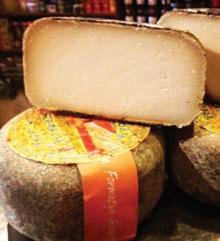
The exact origins of the clubhouse sandwich—chicken, bacon, tomato, lettuce and mayo between two slices of toasted white bread—are foggy. What is clear is that this classic item, harking back to the 1800s, endures to this day. Found mostly on diner, café, private club and hotel restaurant menus, there are several variations circulating around Victoria, including the three-slice old school rendition at the Dutch Bakery; the Union Club’s sliced-intoquarters clubhouse speared with frilly toothpicks; and the upmarket version at the Cactus Club. There, executive chef Rob Feenie teams up hoisin-anointed duck breast with roast chicken, crispy prosciutto, mayo and butter lettuce served on sturdy pecan-fig bread, a club I would gladly become a member of.
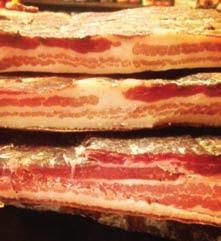
CACTUSCLUBCAFE.COM
• Pulled pork braised in Phillips root beer at Wheelies (Cinda Chavich)
• Calamari Sandwich at Chorizo & Co. (Jill Van Gyn, Adrian Sala)
• The Vegan Sandwich at Wildfire Bakery (Holly Brooke)
• Meatball Supreme at Italian Food Imports (Rebecca Wellman)
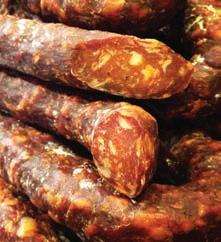
• Breakfast Bagel at Parsonage Café (Rebecca Baugniet)
• The Reuben at the Parsonage Café (Elizabeth Monk)
• Lightly seared Albacore Tuna with warm hummus (or sometimes olive tapenade), soft boiled egg, arugula at Part and Parcel (Adam Cantor)
• Meat and Bread’s Porchetta (Elizabeth Nyland)

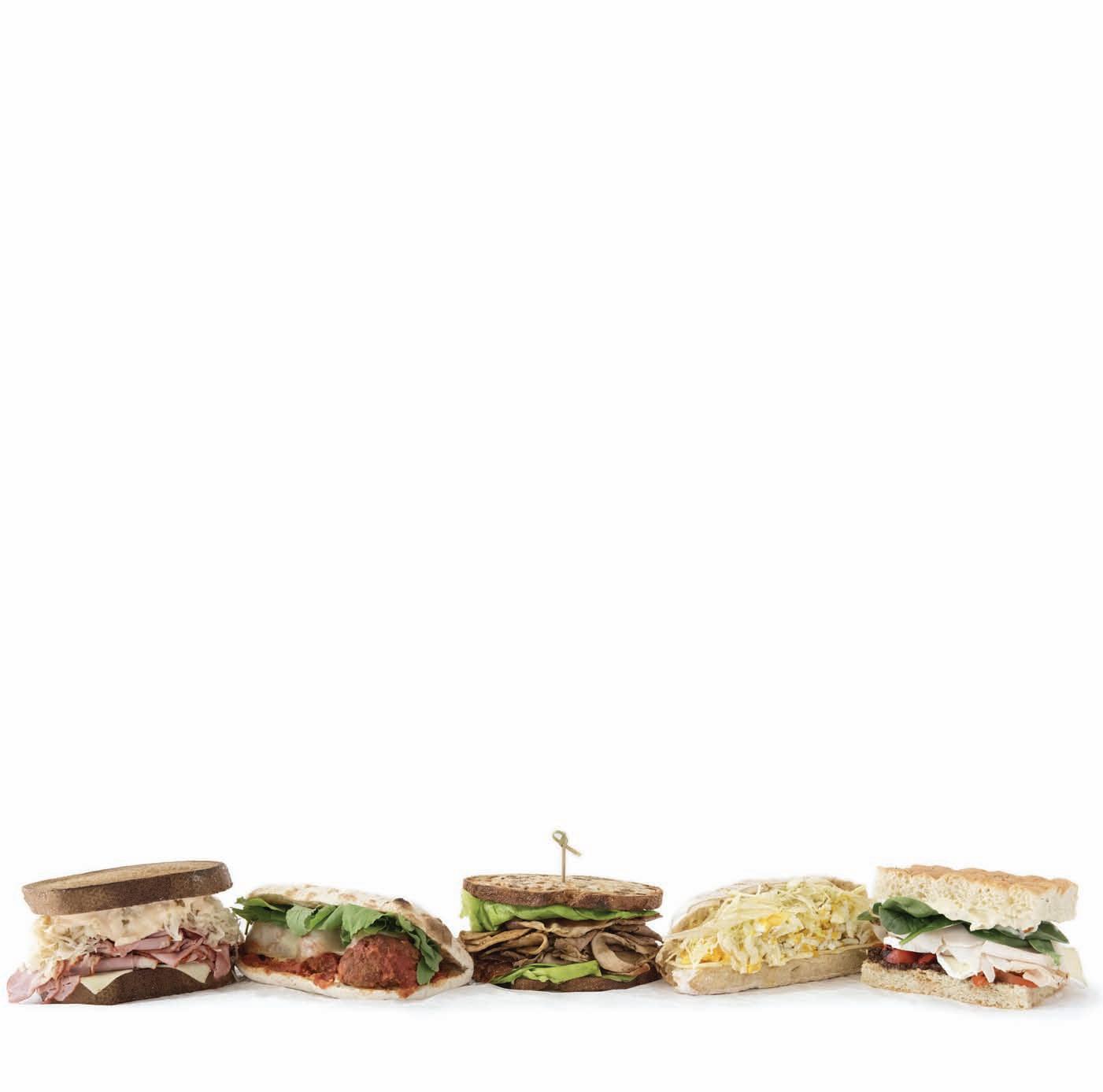
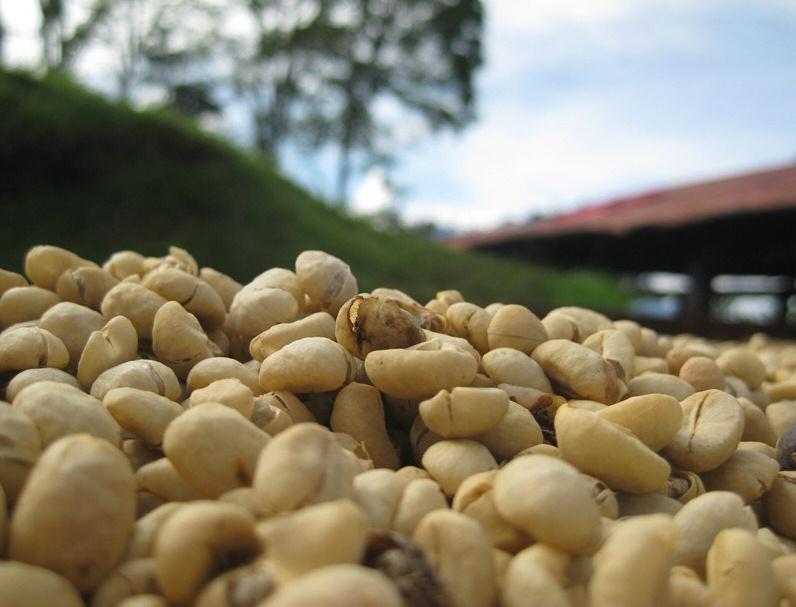




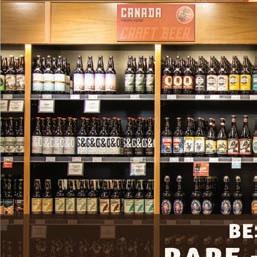

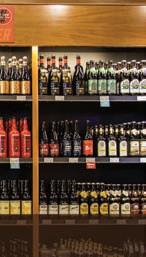








































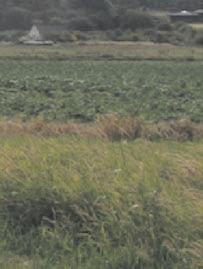































TURNING THE PEDALS IN SEARCH OF VICTORIA’S BEST BIKE-FRIENDLY SPOTS TO SNACK.

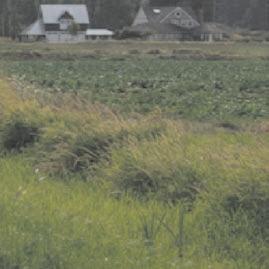



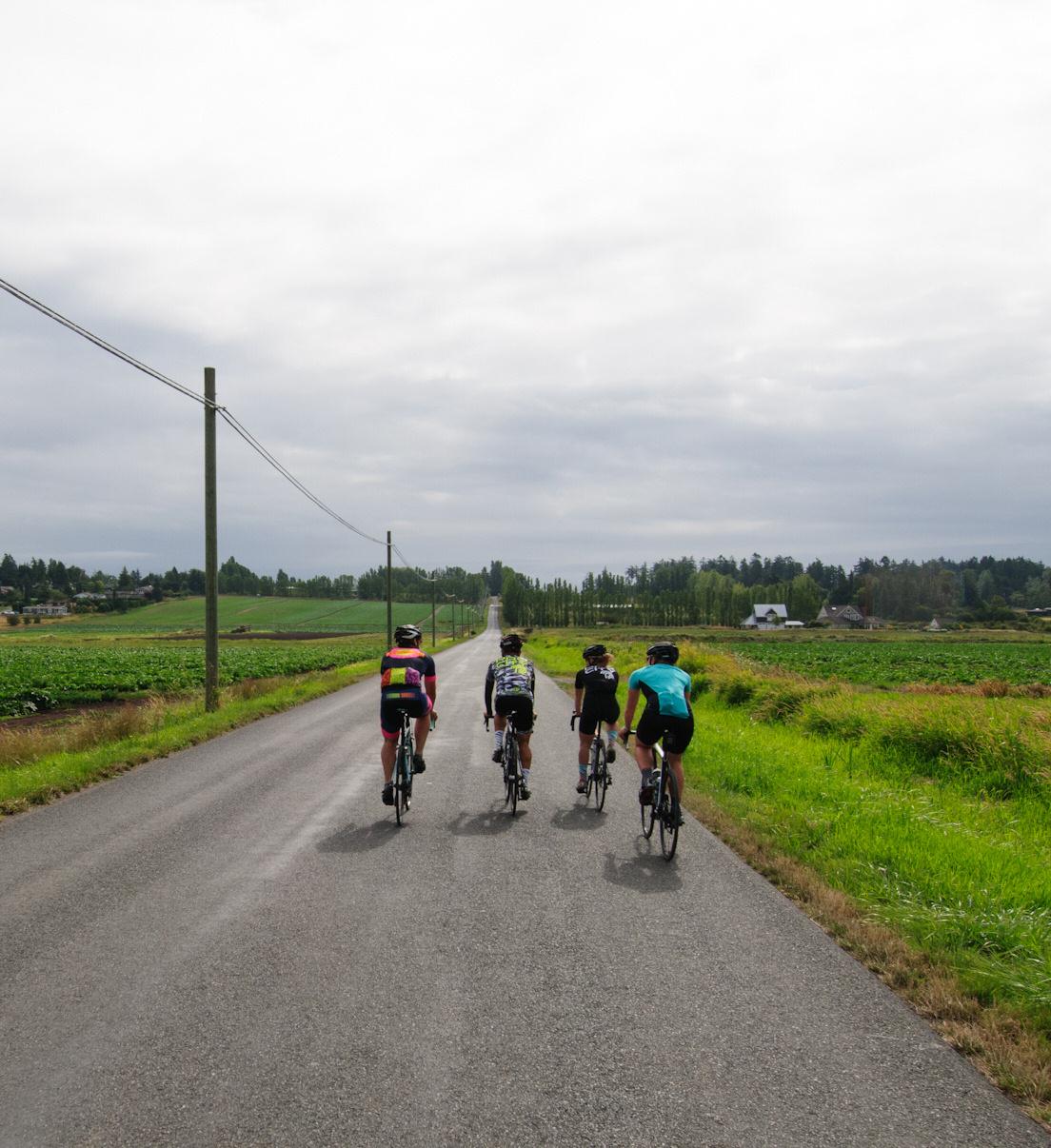































A TRUE GEM of a neighbourhood café and bakery. Fresh-baked bread and goodies, full breakfast, brunch, and lunch menus, and a selection of incredible house-made Gelatos make you feel like you’ve ridden into the hills of Tuscany, just 30-40 minutes of pedaling from downtown.
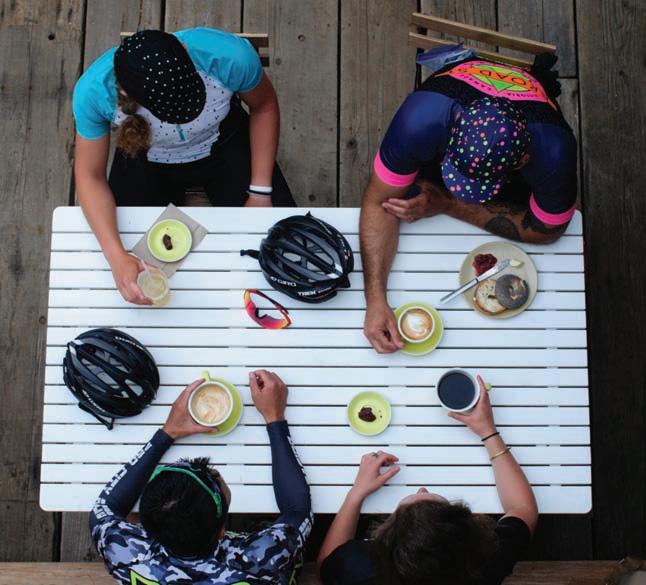
IN THE HEART of the Peninsula’s most visible agricultural zone, behind the Michell’s Farm Market is one of the most low-key farm-to-table “restaurants” imaginable. Locally sourced, the food is simple and delicious: especially the breakfast sandwich, the perfect mid-ride power-up.

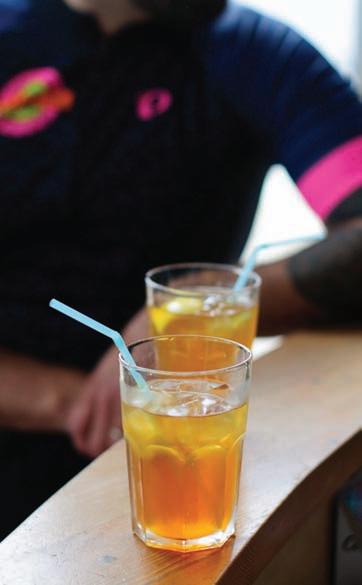
THROUGH A NARROW ENTRANCE into a courtyard behind the Gonzales Pharmacy, at Fairfield and Irving (1 block west of Foul Bay), is a beautiful little sun-drenched courtyard space, attached to a tiny little co ee bar. The menu is small, but the focus is on quality, with top-shelf co ee, baked-goods, and kombucha. If you’re looking for a delightfully secluded experience, unlike anything in town, this place is worth a visit.
CATEGORY 12 BREWING produces top-notch brews, in well-considered though not-too-common styles: Black IPA, Belgian Specialty Ale, Dry-Hopped Sour, Session IPA, among others. The brains behind the operation, Michael Kuzyk, has a PhD in biochemistry, a clearly refined palette, and a close eye on the trajectory of craft brewing.
OCCUPYING A QUIET CORNER in residential Gordon Head, Township is packed to the brim with co ee from Fantastico, Tea from Jagasilk, bread from Fry’s, gluten-free treats from Janice Mansfield, and all kinds of variations thereof. Set up to be a hub for the neighbourhood, the space is open for locals to promote their events, share ideas, and chill out on inside or on the patio.
A BIKE RIDE IN SEARCH OF GREAT FOOD AND COFFEE in Victoria would definitely not be complete without a stop at the mecca for pre-ride espressos, and with the recent addition of Fantastico’s bar/deli: post-ride pints. This corner has plenty of options for satisfying cyclist-level hunger pangs, as well as a massive patio for stashing your bike in plain view of nearly anywhere you choose to sit.
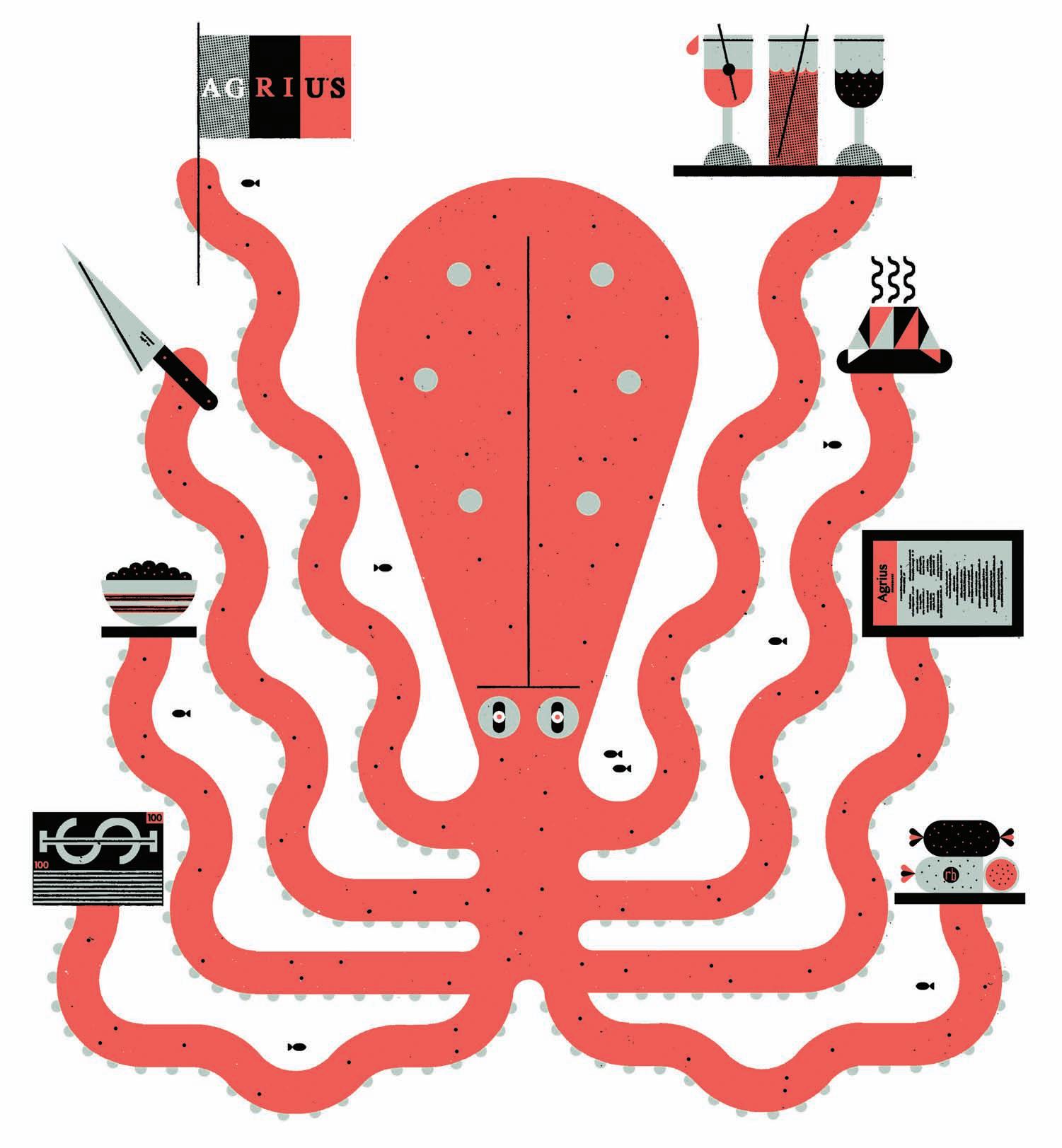
Everyone dreams of opening a restaurant at one point in their life. We think of the food we love and we play with the idea; that we would do it right. We could make it work. We’d be insanely successful and we would be beloved by the public. We’d watch as customer’s eyes light up as they taste our food; the love we would get from our families because, well, look at what we’ve accomplished. The line up would be out the door every day. Think of those late nights you’ve had with friends over one too many whiskies: you’re sitting around a campfire, or gazing into space on the couch with good friends; or maybe you’re in a stranger’s kitchen as a house party rages around you. You lean in real close with one eye squeezed shut for focus and Jack Daniels on your breath and you spit out those magical words: –“Dude, we should open a restaurant”.
But should you? Do you really think you have what it takes? The stress, the costing, dealing with suppliers; staff coming in late, walking off shift or not showing up at all; customers upset because the steak is too meaty and the bottle of wine they tossed back in 20 minutes was apparently corked; the days where you promise yourself that you’re only going to put in 10 hours and it turns out like every other 18-hour day you’ve ever had and you literally have nothing to show for it. A full
WHY OPEN A RESTAURANT IN THE FIRST PLACE?
Sam: To get to work with fun people like us!
Cliff: And it seemed like a good idea at the time! Its like an approach to like: do all of the most fantastic things you possibly can… but you kind of have to trick yourself into it like ‘oh ya this will totally work’.
Ben: Talk to any of the people who are a part of this about what their passion is or what their focus is going to be in the business – take Paul talking about meat or Cliff talking about bread –you’re kind of like well, shit! if everyone if going to come at this with this much passion and drive there’s no way we can fail it just might be a struggle to get there.
nights sleep is a pipe dream and all you eat is kitchen scraps from the line and whatever is at the bottom of that random pot you’re holding in your hand. Well, this is what running a restaurant is like.
I’m just going to assume that Cliff Leir, known best for one of Victoria’s premier bakeries, Fol Epi, knew exactly what he was getting into when he decided that opening Agrius was a good idea. And by all accounts it was a fantastic idea, one that has raised the bar for dining in Victoria. When you walk into Agrius by Fol Epi it is apparent that this restaurant is a living and breathing entity housing multiple departments designed to produce food that exceed all expectations. There is, of course, the pastry and coffee department, the extensive bar with a surfeit of cocktail paraphernalia, a room dedicated to butchering a curing meats, and an open kitchen still gleaming with the optimism of a new restaurant.
Ben: Well, first it was just supposed to be a pastry shop. Then with the space coming available and obviously there was way too much space for just a pastry shop, so slowly piece by piece, adding the restaurant, adding a strong focus on our meat, curing and preservation… then with a restaurant we needed a crazy bar that served awesome cocktails and fantastic local wine, so it just kind of grew and grew.
I was supposed to meet with Cliff for a one-on-one but as is the norm in the restaurant industry, events can turn on a dime. There were seven of them, all representing different departments and different positions within the restaurant. This was going to be an interview done ‘Wu Tang Style’, as Cliff so aptly put it. I had Sam Harris (Chef), Nils Scneider (Sous-Chef), Jody Boyko (cook), Ben Anderson (Front of House), Adam Bonneau (Bar and Cocktails) Paul Van Trigt “the Meat Lord” (Butcher), and Cliff Leir, known to the team as “The Dough Father”. This is a tight and unified crew. Each one is a specialist in his or her field. Agrius lives and dies everyday by the hand of each of these experts. Each morning the machine is awoken and brought to life by people who not only love what they do but who have decided that this is going to be their life’s work. These aren’t kids putting themselves through college or transients just trying to make a day’s living. These seven individuals have decided to commit themselves to the restaurant life, for all of its grief, romance, frustration and joy and they have decided that they are going to love every moment of the process. As Cliff puts it, “You can’t be looking for an end game. You have to enjoy swimming in the chaos”
Sam: A bunch of us worked at Stage and they have been really supportive of us… I was the chef there, Ben was the manager, Nils worked there, Scott our dishwasher worked there, one of our servers… Ben: …basically we took the best people we could possibly find and tried to convince them to leave were they were.
Everyone: DON’T.
Sam: Work in a restaurant, work your way from the bottom to the top at a successful restaurant and learn from the people there. Learn how they make money and what those margins are…(long pause)… then find a big bag of money and have some fun.
Cliff: The space made it all possible. We didn’t go into this thinking that we needed to look for a space to do all of these things, because that would have been impossible …but when the space came up we realized that we could do all of these great things…It was the dream plan. It was all the things we wanted to do but never had the opportunity. Then somehow, over a period of time, it all actually happened.
Cliff: I think having people you’ve worked with before and who you know you can work really hard with is very important. Having that rapport [with you coworkers], and having that crew mentality, the sense that we are in this together…we’ve fought some battles before and we’re going to push through…
Ben: Knowing that we can all sit down at the end of a shift and have a beer and still be friends makes things a lot easier.
Nils: With the crew we have here it felt pretty secure… going into this project with such professionals.
Paul: Make sure you are going in for the right reasons. Don’t do it for money or fame or a tv show.
Adam: It really depends on your ‘why’. Do you want to do it because you like providing a good experience for people or do you want to sit at your bar and drink with your friends… What are you trying to add? There are a thousand restaurants around in Victoria, so what do you bring to the table and how are you going to allow people to enjoy that experience.
Cliff: A lot of the time it’s not the people who want to, it’s the people who just do it.
of a
“Everyone is flying by the seat of their pants”
They don’t think ‘oh that’s something I want’ they are just living that lifestyle.
WHAT ARE THE ESSENTIAL QUALITIES ONE NEEDS IN ORDER TO GET INTO THE RESTAURANT GAME?

(Everyone shouting at once)
Jody: Teamwork!
Nils: Taking risks!
Cliff: Mental instability and he ability to work on very little sleep
Paul: Patience
Sam: Everyone has heard that most restaurants fail in the first year or two and it impossible to not always be kind of aware of that fact – there is a good chance that none of this is going to work and it might not be anything that we’re doing. It might be that we’re not getting the right response, or there aren’t enough people living in the city, or people just don’t understand what we are doing. Hopefully we are doing something that people want. We hope that that becomes the reality and that if we put enough work into it, in the end we’ll get that response.
3:30 am Pastry team arrives to make you lovely things
6 am Barristas and retail set up to service your caffeine and carbohydrate needs. the cooks bring the kitchen back to life for lunch service
7 am Doors open, bread smells bring you in (farmer drops off bundles of chard)
10 am Servers and bartenders wake up the restaurant for lunch service (butter maker drops 50 lbs of fresh butter)
12 pm Chefs and cooks are laying the ground work for dinner service
3 pm Tear down lunch and build up dinner (a whole pig is wheeled to the kitchen)
3-4:30 pm The hour happy hour swings through the doors (here come the cheese makers)
5 pm Pre -service for dinner, her engine is climbing to full speed
was built from the ground up. Adam: …especially when you are trying to create something that’s unique and different – you’ve got to take a different approach. There is no guideline.
Cliff: I’m amazed that it continues to work every day. This time last year we had just started with our meats.
Sam: Ya, Paul had ham legs hanging to get prosciutto ready for this September.
Ben: It feels like the entire world is crashing down and then suddenly Saturday night is over and you’re having a beer at the bar and you’re like ‘oh that was a great weekend!’. Paul: I hear the chit machine in my dreams. (Ed note – the machine that spits out orders in the kitchen).
Adam: Its an all encompassing lifestyle –there are always new things to think about, new ways to use products…you’re always working and you are always moving… you really have to want to do it.
Ben: There are menu changes that could take place 20-30 minutes before dinner depending on what’s available that day, because ingredients are coming in from all over the place. Everything is changing all the time.
WHAT DOES OPENING A RESTAURANT DO TO A PERSON EMOTIONALLY, PHYSICALLY, AND MENTALLY?
Cliff: Roasted pine mushrooms. There’s something so satiating about them.
sam: A spot prawn right out of the ocean
ben: My first chef made me pancakes with seared foie gras and apricot plum compote on top. I was like 18 and after that I wanted to try everything.
WHAT HAS BEEN THE MOST CHALLENG ING PART OF OPENING A RESTAURANT?


Ben: It’s always the first time we’ve done anything… it’s not like this place comes with operations manuals. There is lots of trial and error and lots of mistakes that have been made. There’s going to be a million more but we’ll learn from them.
Jody: There were no recipes – everything
10 pm Service stops and the work begins
11:30 pm-1 am Feet are up beers go down
1-2 am am The night cleaners come to wipe away her blemishes
2-3:30 am This is when she sleeps
Cliff: It’s the whole range of being like so pumped to being so numb after working like 20-22 hours and at the end of a shift we’re still jacked. You feel like you’ll never get to sleep. There are times when you feel so good about it all, so confident but at the same time you doubt everything and working through that whole range of emotion is part of what makes this experience so enriching. I’ve had the odd day when I wonder if I’ve flushed my life down the toilet… but it goes away the next day. It’s about embracing the super highs and then also feeling like garbage sometimes.
nils: Fresh uni straight from the ocean at Tsukiji Market in Tokyo
jody: A flowering berry off a tasting menu in Spain that gave me an electric shock
adam: Paul’s smoked ribs
paul: I’m from Ontario, so spot prawns fresh out of the water are a really big deal to me.
“At the end of the day nobody is going to remember that fancy foam”
- PAUL
“I’m surprised no has killed me yet”
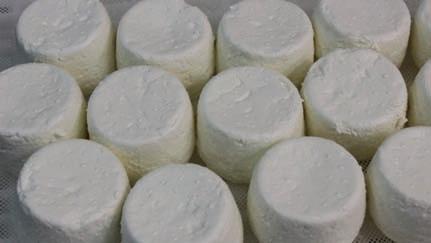
Hudson’s On First
Award winning dining in a beautifully restored heritage home. Local ingredients, classic techniques and made from scratch cooking are a just few reasons to visit us in Duncan more often. Celebrate Bubbles & Brunch, Lunch and Dinner.
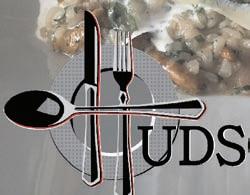
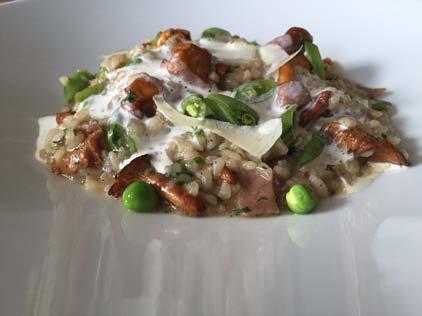
163 First St. Duncan, BC, 250-597-0066, hudsonsonfirst.ca
Duncan Garage Café & Bakery
Take time out in your busy fall for a piece of triple chocolate cake or our house preserved spiced peach cheesecake! We serve the local harvest. Open 7 days/week.
330 Duncan St., Downtown Duncan (across from the railway station), 250-748-6223

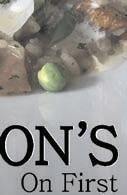
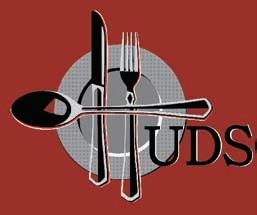
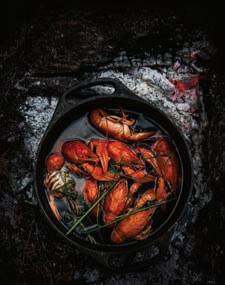
Henri Procter Realtor
New kitchen, new home? Henri is an award winning Realtor, serving Saltspring for 30 years. Positive, friendly and professional, Henri will excel in finding your perfect match.
Henri Procter, MacDonald Realty, 250.537.1201, henriprocter@gmail.com
Whisk
Whisk is a fully stocked kitchen shop nestled in the middle of the Victoria Public Market. Fiestaware, bright linens, gadgets, cards and cookware are just some of the reasons to visit, and it always smells delicious in here! Wedding registry available. At the Victoria Public Market, 778-433-9184, whiskvictoria.ca, Facebook and Instagram. Open 7 days a week
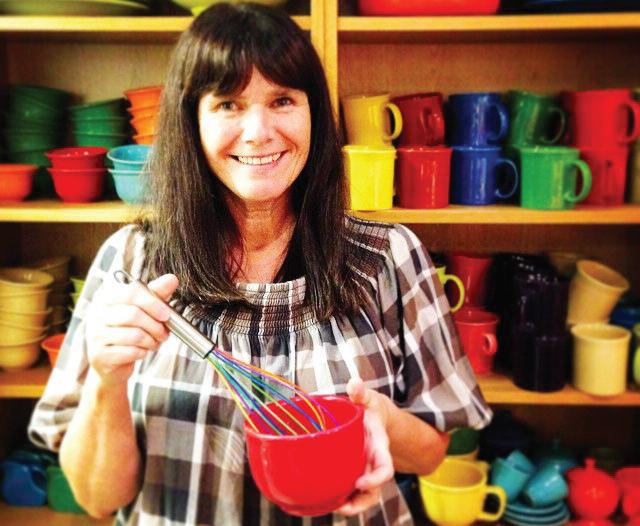
Adrienne’s Restaurant & Tea Garden
Come and visit our Restaurant for Breakfast, Lunch and Afternoon High Tea, we also offer Afternoon Tea plate and Kid's Tea plate! New in our Deli and Bakery: house made Linzer Cookies, Vanilla Kipferl and Coconut macaroons. We have now available Wildfire organic artisan wood oven baked breads, also as Sandwiches to go! Open daily!
5325 Cordova Bay Road, Victoria, BC, 250-658-1535, AdriennesTeaGarden.com
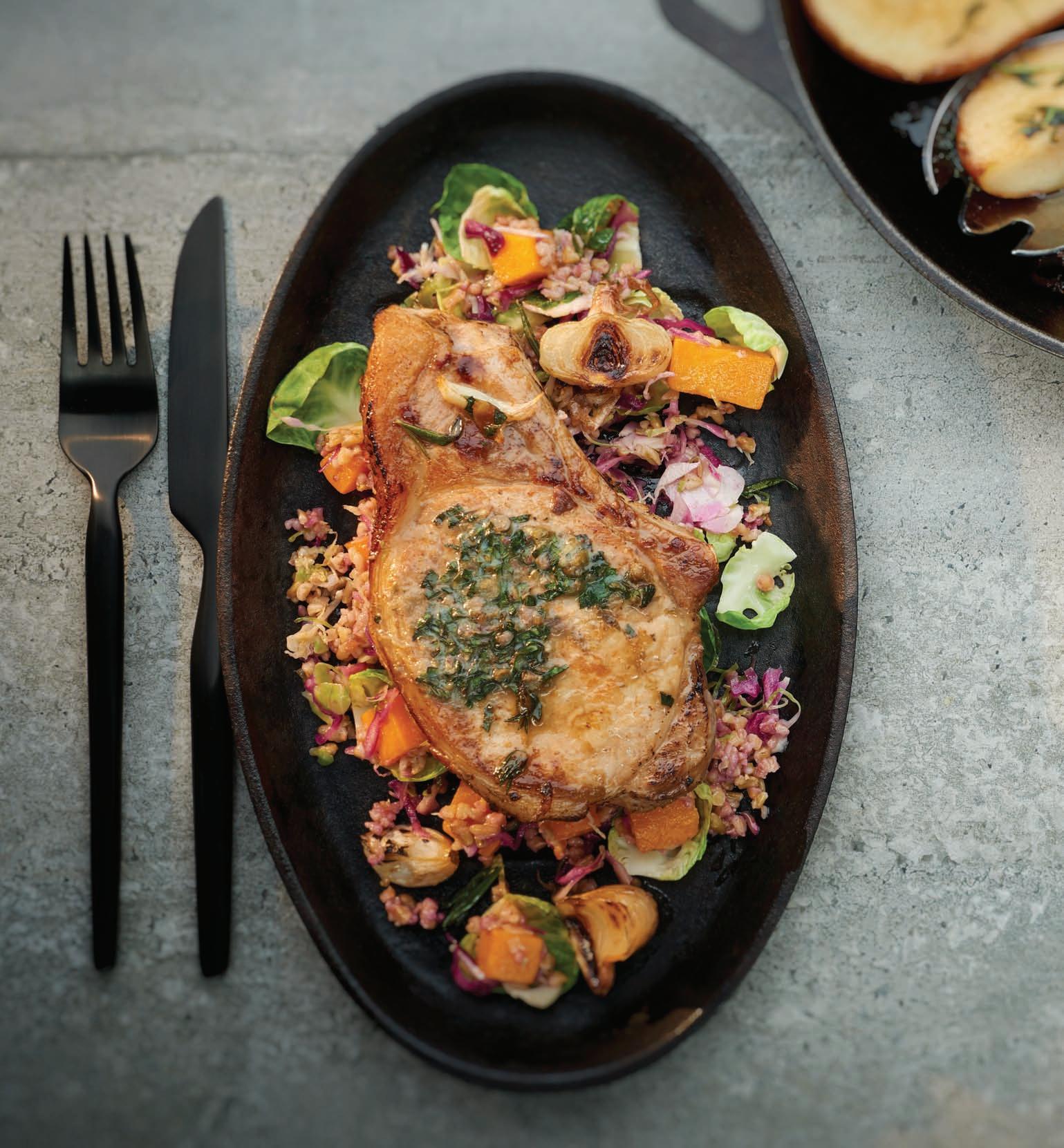
SERVES 6
A quick herbed-infused brine before cooking adds flavour and keeps chops moist during cooking. Ask your butcher for big thick chops with a generous layer of fat - that's where the flavour is!
2 cups cider vinegar
1 cup brown sugar
3/4 cup kosher salt
10 rosemary sprigs
3 Tbsp peppercorns
3 Tbsp mustard seeds
3 Tbsp fennel seeds
6 star anise
24 ice cubes
6 thick, bone-in, centre-cut pork chops
6-8 cipollini onions, peeled and cut in halves
6 garlic cloves, unpeeled
For the brine, in a large, 12-cup measuring cup, microwave vinegar until hot. Add sugar, salt, 8 of the rosemary sprigs, peppercorns, mustard seeds, fennel and star anise. Stir until sugar and most of the salt dissolve. Rewarm, if necessary.
Once dissolved, stir in ice cubes until melted. Stir in enough cold water so mixture measures about 8 cups total. Let stand for 20 minutes so flavours meld.
Place chops in 2 large plastic bags or large resealable freezer bags. Pour cold brine overtop. Push chops down into marinade, and then squeeze out as much air as possible from bag. Wrap or seal tightly. The point is to squish the meat into the marinade. Place bag in a bowl and refrigerate for 2 hours.
Preheat oven to 400°F. Coat a cast iron frying pan with oil and set over medium-high heat. Add remaining 2 rosemary sprigs, onions and garlic. Stir-fry 1-2 minutes, then place pan in oven. Roast until onions are tender,
about 18-20 minutes. Remove from pan and set aside for later. Wipe clean, and then re-oil.
Once pork has brined for 2 hours, discard marinade and rinse chops. Pat dry with paper towels and then brush with oil. Season meat with salt and pepper. Working in batches, sear chops fat-side down, in cast iron pan set over medium-high heat to render some of the fat. Then sear meaty sides until golden, about 2 minutes per side. Adjust heat as needed.
Place seared chops on a baking sheet and sprinkle cooked rosemary, onion and garlic overtop. Roast at 350°F until chops are just cooked. Aim for 130-140°F on a meat thermometer. Top with slices of Basil and Anchovy Butter and let stand 10 minutes before serving.
Basil and Anchovy Butter Combine 1/2 cup roomtemperature, unsalted butter with 1/2 cup chopped fresh basil, 4 minced anchovies, 1 minced garlic clove, 1 Tbsp chopped capers and 1 tsp grated lemon peel. Spoon onto a piece of plastic or parchment and roll into a cylinder. Chill until firm, and then slice into rounds.
SERVES 6
These straddle the line of savoury and sweet. Great paired with roasted meats, especially pork, game or duck. Or serve with dollops of yogurt or over vanilla bean ice cream for a wicked dessert.
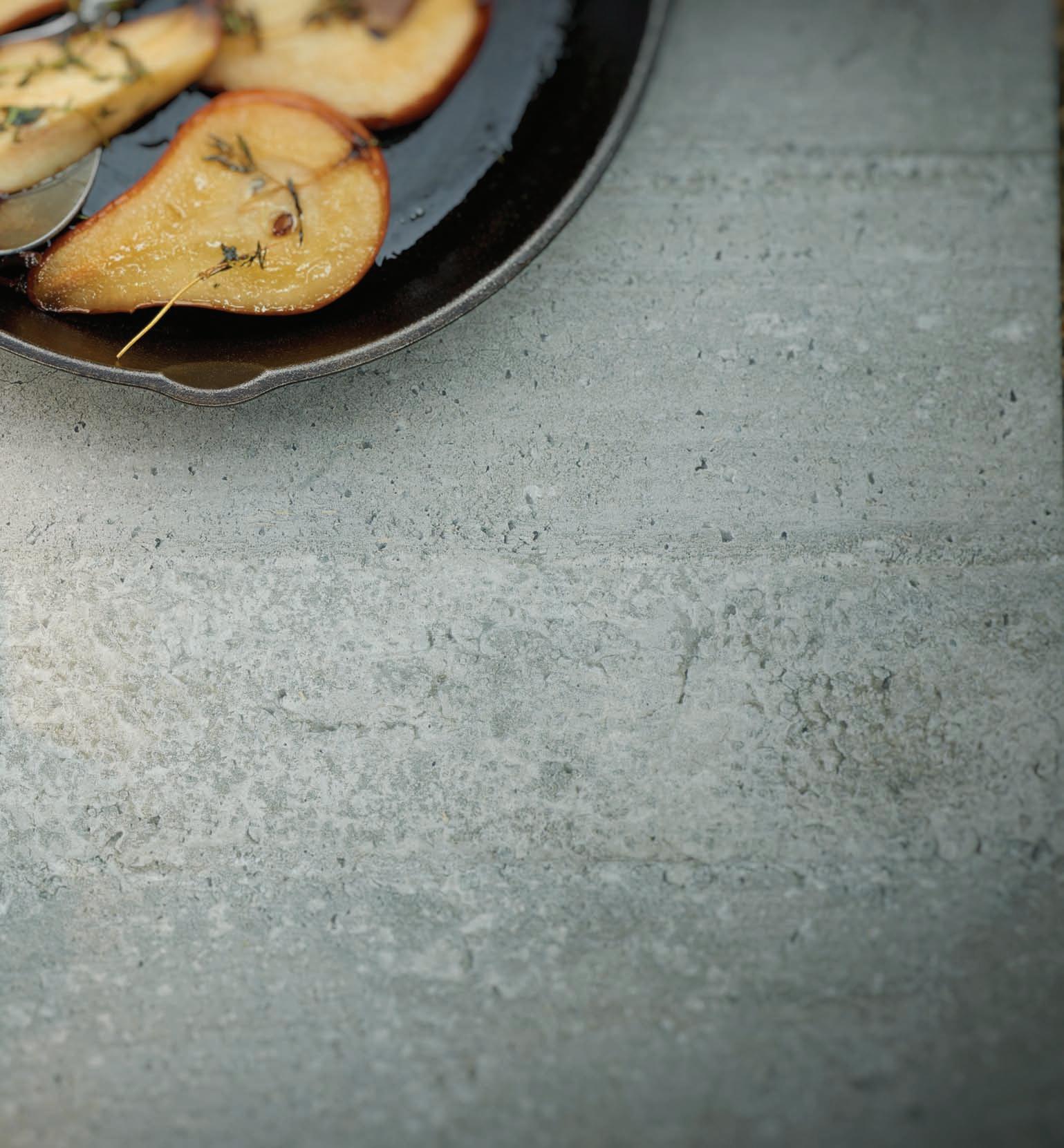
1/4 cup each honey and bourbon
2 Tbsp butter, melted
1/2 tsp sea salt
3 ripe pears
Fresh thyme sprigs
Stir honey and bourbon with butter and salt. Peel pears, and then cut in half. Don’t remove seeds. Place
cut side up in a cast iron pan and drizzle with bourbon mixture. Add thyme. Roast in preheated 475°F oven for 10 minutes, then turn over. Continue to roast just until tender, 8 to 15 more minutes, depending on ripeness of pear.
SERVES 6
Freekeh is similar to bulgur, but the flavour is way more complex. Dry-toast the grains before cooking and serve the salad at room temperature.
1 cup freekeh
1 tsp sea salt

2 cups cooked cubed squash
2 cups shredded Brussels sprouts
1 cup whole Brussels sprouts outer leaves*
2 cups finely shredded purple cabbage 1/3 cup favourite vinaigrette
Place freekeh in a large saucepan and set over mediumhigh heat. Stir often, until fragrant and toasty, about 34 minutes. Add salt and stir in 2 cups water. Bring to a boil, and then reduce heat to low. Cover and simmer until water has been absorbed, about 20-25 minutes. Turn off heat and uncover. Place a clean dish towel over top, and then cover with lid again. Let stand for 10 min. Uncover, and let cool.
Place squash, shredded Brussels sprouts and whole leaves, and purple cabbage in a serving bowl. Add warm freekeh. Drizzle with dressing and toss to mix. Taste and season with salt and pepper.
*Repeatedly trim core and trim the leaves off the Brussels sprouts - to do this you just keeping trimming the core so the leaves easily fall off.
CHOPS AND BUTTERY BOURBONED-UP PEARS NATURALLY COMPLIMENT EACH OTHER WITH THEIR WICKED RICH SAVOURY 'N SWEET COMBO.
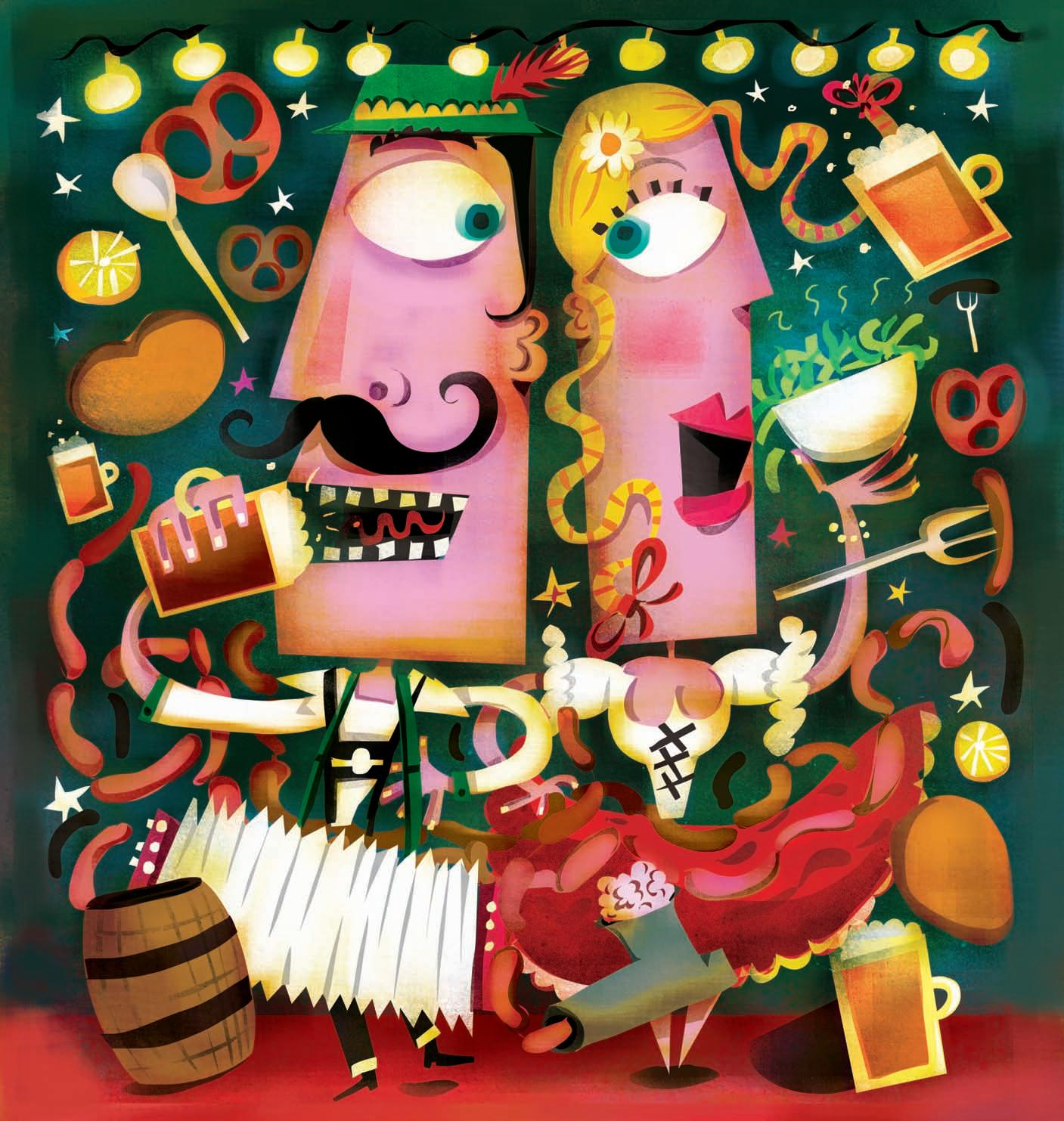
ILLUSTRATION
Lee HodgesIt’s fun to be in Munich for Oktoberfest, but with a little do-it-yourself advice from some of our favourite local experts, you can create your own oom-pah-pah party right here at home. Set the scene for a Bavarian feast with house-made sausages and schnitzel, healthy fermented sauerkraut, even a batch of hand-formed pretzels to munch alongside a mug of home brew. Or simply tap a keg of local lager, plunk a tent in the garden, and haul out the accordion. Ledehosen optional!
The German bratwurst sausage is a centrepiece of any Oktoberfest menu. Like the 500-year-old Bavarian purity law for beer, Germans are purists, too, when it comes to their sausages, too, and quality brats contain only ground meat, spices and water (no fillers, binders or preservatives).
At North 48, Chef Sam Chalmers makes sausages for the restaurant from scratch several times a week. Bratwurst, says Chalmers, is a “white sausage,” usually made with pork and veal, and simply spiced with nutmeg, marjoram and a touch of thyme. Pork butt (a.k.a., pork shoulder) has the perfect 65:35 meatto-fat ratio for sausages, says Chalmers, and a medium- coarse die on the grinder produces the right texture. You can use an old-fashioned hand-cranked meat grinder, or a mixer with a grinding/sausagemaking attachment, but Chalmers says it’s important to keep everything cold.
A trick is to add an ice cube or two to the grinder, between handfuls of cold, cubed meat. Then Chalmers kneads the spices into the ground meat by hand, adding about two cups of water for every five pounds of meat (the secret to juicy sausages).
Get natural casings—clean pig intestines—from your butcher, soak for 30 minutes in cold water to remove excess salt and rinse well inside. Then carefully untangle the casings (patience required), press onto the end of a hand-cranked or electric stuffer and fill, forming a large coil. Chalmers says you can also rig up a piping bag with a sausage-stuffing nozzle to fill casings by hand.
Create links by pinching and twirling the coil at intervals—an art that requires practice to ensure sausages are neither over- or under-filled. If stuffing your own sausage seems daunting, make sausage patties with the seasoned meat, or head to one of the city’s butchers for fresh bratwurst. Try brats from the Village Butcher or the Galloping Goose Sausage Co. To cook fresh sausages, poach slowly, then panfry or grill. Never stab sausages or all the tasty juices will escape.
After serving schnitzel at The Rathskeller for more than 50 years, owner Andrea Sims and her long-time chef Bryn Fletcher are experts in pounding, breading and frying this Oktoberfest specialty.
And though she is selling the family schnitzelhaus,
Sims happily shared her schnitzel secrets. Making schnitzel is a bit of a production, but it’s easy and economical to make. Just buy a boneless pork loin roast, trim any excess fat, cut it into 1/3-1/2-inch slices (each about 3.5-4 oz.) before pounding.
At The Rathskeller, they run through 50 pounds of pork loin a day. The cutlets are tenderized with a machine, but you can do it by hand. Simply cross-hatch each piece slightly on each side with a sharp knife. Then place slices between two layers of plastic wrap, and use a spiked meat mallet to pound each into a thin, 1/4-inch piece that’s about double in size.
The breading phase requires three shallow bowls— one with seasoned flour, a second with beaten egg wash, a third with fine breadcrumbs. Slide a thin cutlet through the flour, shaking off any excess, then the egg wash and crumbs. Heat some clarified butter or olive oil in a nonstick frying pan, and cook quickly, until nicely browned on both sides.
Then serve your schnitzel like they do at The Rathskeller, with a squeeze of lemon, topped with a red wine and mushroom or red pepper sauce, or even fried egg and anchovies.
Schnitzel is best cooked to order, but leftovers made great sandwiches.
Nothing pairs with pork sausages and schnitzel better than sauerkraut, and you can make it from scratch with little more than shredded cabbage and salt, packed into a mason jar.
No need for your grandmother’s big clay crocks or antique wooden kraut shredder (though such classic equipment comes in handy for a bushel of cabbage). Just get out the food processor or a sharp knife, and you’ll be fermenting your own healthy probiotic condiment on the kitchen counter in no time.
Melanie Furman of Culturalive on Salt Spring Island says you should start with a firm, dense head of cabbage. She recommends heirloom varieties such as Danish Ball, Filderkraut or Jersey Wakefield.
Split the head in half, then thinly slice or shred. Laterseason cabbages have more sugar so ferment best, she says. Combine the shredded cabbage with salt in a big stainless steel bowl (1.5-2 tablespoons of raw, untreated salt for 4 pounds of cabbage) and vigorously massage (or pound) the cabbage with your hands, for 5-10 minutes, to release juices. Pack it into a wide-mouth, 1-litre jar by the handful and push it down so there are no air bubbles. Set a smaller, 125-mL mason jar filled with water on top (it should fit into the mouth of the larger jar, to weigh down the cabbage and ensure it’s submerged in liquid (with fresh cabbage, salt and sufficient massaging/pounding it releases enough juice). Cover the jar with a clean cloth held in place with an elastic band, and put it on a plate in a cool (15-20°C) spot. Push the small jar down, morning and night, as the cabbage ferments and the gas bubbles up. The cabbage will be fully fermented and sour in about two weeks, although the colder the spot, the slower the fermentation. Taste it and, when you like the flavour, put a lid on the jar and refrigerate. The sauerkraut will last six months to two years.
You can buy jars of commercial sauerkraut at almost any supermarket, but it’s processed with heat and made with vinegar, so lacks the flavour and probiotics of an oldfashioned ferment. Furman, known as The Sauerkraut
Lady, sells her jars of naturally fermented products, from classic kraut to spicy kimchi, at farm markets and small city grocers. Make a simple cabbage kraut at home, and you’ll never go back.
If you think a pretzel is just a bagel with a twist, you’d be wrong. Byron Fry, who sells fresh pretzels daily at Fry’s Bakery, says pretzels are not boiled like bagels, but rather dipped in a caustic soda solution before baking to create the shiny crust and unique taste.
The dough is “really just a stiff white bread dough, made with butter and a little honey,” says Fry, as he expertly twirls and twists the classic shape.

Each 100-gram ball of springy dough is rolled into an 18inch-long rope “with a fat belly and tapering ends” to create a pretzel with both chewy and crunchy bits. Fry grabs the rope, spins it once to form a loop, then attaches the points to the loop, “like hands crossed in prayer,” he says, crossing his hands over his chest.
Making pretzels is a two-day process. The dough is mixed in the morning, left to rise and ferment a few hours to add flavour, then chilled before the pretzels are formed. They go into the cooler overnight and are dropped into a “lye bath” for about a minute the next morning, before they’re sprinkled with coarse salt and baked in Fry’s wood-fired oven.
Fry buys his dry, powdered lye locally at Borden Mercantile (“it’s also used for soap making”) and warns to carefully mix it with cold water (never boil) to avoid burns. But don’t skip this step. “The reaction with the lye creates the unique alkaline taste, which is the special pretzel flavour.” Baking soda creates a similar effect.
The pretzel is the “baker’s mark in Europe,” says Fry, and there’s one hanging over his bakery’s front door. There’s
also a big basket of pretzels on the counter.
Beer and pretzels are a classic pairing. Fry says they’re particularly good dipped in butter when warm from the oven. But kids like his pretzels, too. “In Germany, they’re given to kids as treats,” he says, and make a great “teething ring” for toddlers.
Beer making is undoubtedly the biggest DIY challenge, but some of our finest craft brewers started at home.
Sean Hoyne, owner and brewmaster at Victoria’s Hoyne Brewing Company, landed his first brewing job when he brought his own home brew to the job interview. He says beer making is “a lovely marriage between art and science,” but there’s a learning curve.
You can make a batch in a couple of weeks at home with very rudimentary equipment (a big mash pot and a plastic fermenting pail), or invest $20,000 in a state-of-the art nano-brewing system, the kind of mini professional set-up used by today’s hyper-local small brewers. Alternatively, you can head to a U-brew operation like Bedford Brewing Co. in Esquimalt and help make a batch of your own all-grain, craft beer in their 50-litre tanks (that’s about 140 bottles) for about half the price of retail beer. They mash the malted grain and make the wort, then you tweak it with added grains, hops and yeast according to one of their recipes (their Bavarian Dark Lager or Czech-style Euro Pilsner are good Oktoberfest choices), and leave your beer to ferment for a couple of weeks. They cold-filter and carbonate it, then you return to do the bottling.
If you’d rather leave it to the professionals completely, just head to one of the city’s exceptional craft breweries for a few growlers, or a whole keg, for your party: a Hoyne Off the Grid Vienna Red Lager, Phillips classic Pilsner, the Potts Pils or Creepy Uncle Dunkel from Moon Under Water, or even a box of Company Lager from Lighthouse Brewing.
With a 20-litre pony keg on ice, you can pull 40 pints for your friends, a great way to get your home-style Oktoberfest hopping.
Prost!
1517 QUADRA ST.
Beer and pretzels are a classic pairing”
- BYRON FRY


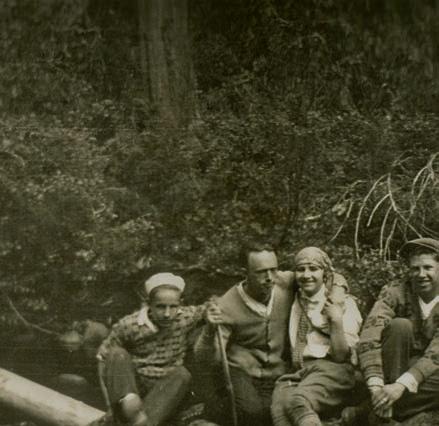



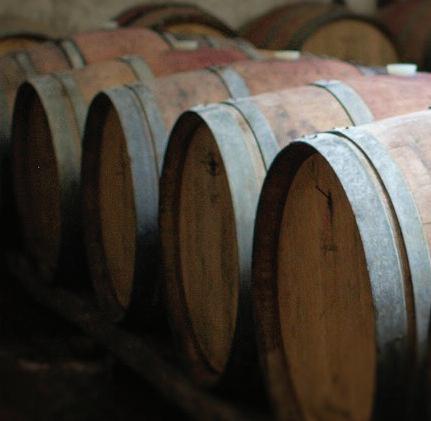


AUTUMN MAXWELL (COLD COMFORT ICE CREAM) AND SEAN HOYNE & CHANTAL O’BRIEN (HOYNE BREWING CO.) TEAMED UP TO CREATE A NEW SYNERGY FOR THEIR PRODUCTS .
 Adrien Sala
Rebecca Wellman
Adrien Sala
Rebecca Wellman
A little over 40 years ago, a small but ambitious company called Bonne Belle was looking for ways to sell more of its product. They made a type of lip balm called Lip Smacker, which, if you’ve ever been a teenage girl (I have not), you are probably familiar with it. The thing was, Lip Smacker wasn’t the only lip balm on the market, so they had to find a way to stand out. To do that, the company decided to do something clever. Rather than pound the pavement with more berry and fruit flavours, they instead sidled up to a famous physician known as Dr. Pepper and developed a new balm, branding it Dr. Pepper Lip Smacker.
Without a doubt, the connection between a soda and a lip balm was a bit of a stretch—and the ads weren’t much better. One line read, “It’s the super shiny lip gloss with lip-smacking flavor… just like the world’s most original soft drink.” But that didn’t matter. The important thing about the alignment was that Dr. Pepper was already a well-known brand, one that had established itself as “the world’s most original soft drink.” By piggybacking on Dr. P’s branding, Bonne Belle was able to get consumers to believe that it too had a fun, original product in a sea of ordinary gloss. Almost overnight, Lip Smacker became a fan favourite and could be found in the pockets and purses of countless young adults – something that would continue for decades to come.
In a world where brand identity has become a key of success, the Bonne Belle model is a great example of how aligning your company with another can be good for business.
A few years ago an acquaintance of mine, Mikaela Rueben, called to ask if she could pick my brain about her work and how to get more people to know about what she was doing. Mikaela had been working as a private chef for some pretty high-profile clients around the world but wanted to carve out more of an identity and build a consulting and chef-for-hire business. To be honest, I don’t really think I had much to offer that she didn't already know. She has a seemingly innate understanding of how to brand herself. I say seemingly because while her understanding is innate, she also works her ass off to do it.
In the years since our phone call, Mikaela’s business has grown significantly. Although she considers B.C.’s west coast her home, her Instagram feed is full of photos of her in different locations around the planet, from Israel to L.A. It’s a blend of shots of her food and her lifestyle, all of it eliciting hearts and praise from her more than 10,000 followers.
A big part of her success has come from her desire and willingness to work with other companies whose brands compare with her own. These days, co-branding is a little more sophisticated—and subtle—than Dr. Pepper Lip Smacker, and Mikaela has navigated that space very well. When I finally manage to get her on the phone to ask her about it, she’s in Montreal, working as a private chef for a couple of A-list celebs filming a movie.
“It’s really hard work,” she tells me about developing those alignments. “Anything that can help get you exposure is important, but it has to align with your brand. Otherwise you’re screwed.”
Mikaela’s brand is largely focussed on using fresh ingredients and creating nourishing, delicious meals. Not that she beats a drum about it, but she avoids processed food as much as possible, preferring to make menus with what is in season and local. It’s a healthy approach and is one of the reasons certain brands will work with her. She’s collaborated with Kit and Ace Designs Inc., writing articles about clean eating, taken over Chalkboard magazine’s Instagram account for a handful of posts, gone shopping at a farmer’s market with a writer from Vogue magazine, and written for online food magazine The New Potato, among others.
Each of the collaborators has a quality that matches her approach to healthy food–and they have existing audiences. As any editor will tell you, finding content that fits perfectly with your brand or focus can be hard, so when someone like Mikaela comes available, it’s worth lending your platform to her. What’s important to remember, though, is that not all of the collaborations are paid. For her, the work is worth doing regardless of monetary kickback. It’s like paying for advertising, but with your time.
“I have done a ton of work for free,” she says. “Once you get your brand going, you can get paid after. But you have to start somewhere.”
More locally, collaborations are happening that work on the same principal. There are restaurants like The Village, which has a great program co-promoting with Blue Roots Farm for their greens. An aqvavit from Sheringham Distillery is being made in collaboration with noted bartender Shawn Soole. Food trucks regularly offer Phillip’s Brewing Company sodas. Cold Comfort Ice Cream uses Hoyne Dark Matter for one of their products. The list goes on, but in most cases, all of it is good for business, as long as the collaborations are the right fit.
For Sean Hoyne of Hoyne Brewing, collaborations are more about relationships than a branding exercise. For several years, he has teamed up with Habit Coffee and
Bows & Arrows Coffee Roasters to make the popular Voltage Espresso Stout. But he also supports farmer’s markets or school initiatives.
“I like working with people I believe in,” he says. “It’s fun to do projects with guys like Shaner [of Habit].”
To me, when Hoyne talks of those collaborations and supporting other businesses through different projects, it’s essentially the same thing as what Mikaela Reuben promotes, just with different language. Where she will use terms like “alignment” and “exposure,” Sean Hoyne will say “relationships” and “supporting.” It's about aligning your company with likeminded business or projects. But the supportive relationships he talks about have an inherent halo effect for his craft beer company. If people see that Hoyne is working with other local companies they enjoy, then it follows that they would be more likely to purchase some of Hoyne’s products over another. His intentions may be genuinely altruistic, but it’s still a great exercise in co-branding and alignment.
As I talked with people who are doing well with co-branding and alignments, certain things kept coming up about how to approach the practice. Probably the most important thing, I’ve learned, is that the alignment make sense. As Mikaela told me, teaming up with a vodka company for her health-focused business just wouldn’t be smart— even though she’s happy to drink it.
It’s also important to make a plan, a strategy for when and with whom you will make those alignments.
“I try to say yes to things, but they can be really consuming,” says Mikaela. It’s important, she tells me, to think about what each collaboration means and have a plan in place for when those opportunities come up. “I have to work to make money to take the time off to build my brand.”
For Sean Hoyne, who is more focused on the community aspect of his collaborations, it’s important that the alignments are happening for the right reasons. Don’t be afraid to reach out, he tells me, but make sure it’s for a good purpose, that your intentions aren’t just to cash in.
At the end of the day, whether you’re excited by the business in terms of co-branding or not, the good news is that as more independent food businesses align with others in the scene, we’ll get to enjoy more interesting options as consumers. Personally, I’d like to suggest a taco and whisky food truck that also sells local greens and ice cream (and maybe has somewhere I can nap), but I think we may still be a ways off from that.
“As I talked with people who are doing well with co-branding and alignments, certain things kept coming up about how to approach the practice.”
gewurztraminer, riesling and muscat give wines that have pronounced aromas. Each is different, but they are never shy. Try a New Zealand sauvignon blanc to smell the typical grass, lime and white flowers. Then try a gewurztraminer. It’s equally as pronounced, but totally different – with roses, spices and tropical fruits. The “others” are the more subdued varieties. Chardonnay and chenin fall into this category. They are naturally more subtle and region and winemaking often play a more important role in how they taste in the glass.
THE VICTORIA WINE FESTIVAL IS BACK FOR ITS THIRD YEAR ON THE 23RD AND 24TH OF SEPTEMBER AT THE PARKSIDE HOTEL AND SPA. WITH THREE PUBLIC TASTINGS AND FOUR SEMINARS, THERE’S MORE TO TASTE THAN EVER.
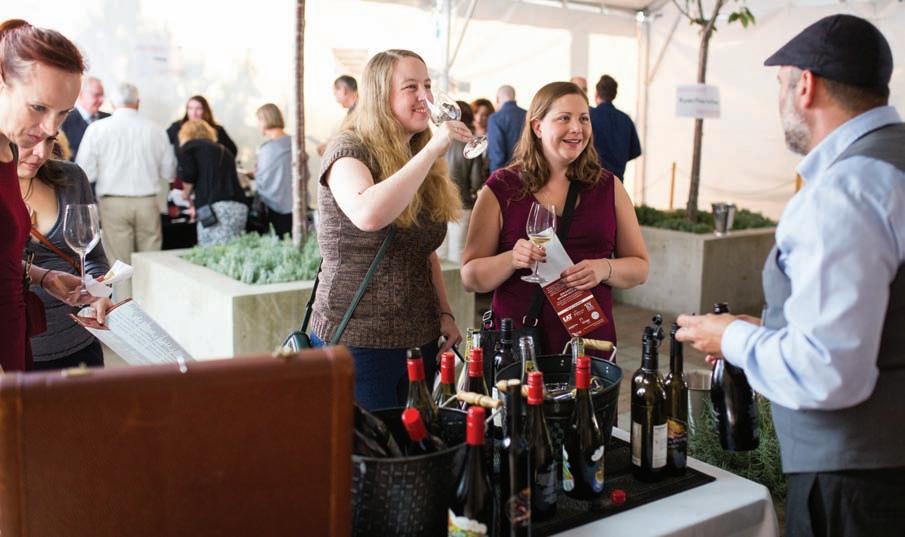
Whether you’ve just started to explore wine or are a seasoned wineaux, there are things to discover. Dave Bain, the festival organizer, has set out to create an environment where everyone feels welcome and comfortable.
The three public tastings (Friday evening, Saturday afternoon and Saturday evening) take place at the Parkside hotel in a unique combination of indoor and outdoor space. With close to 300 wines and a selection of nibbles, it’s a great opportunity to try new wines without investing in whole bottles. If you do find something you love, you can purchase it at the pop-up liquor store, operated by Vessel Liquor Store.
This year, there are more principals - people directly associated with a winery – in attendance. They know what’s going on and are always ready to tell the stories behind their wines. Having worked at a few festivals, I know questions are a welcome break from pouring – so ASK!
There’s an increased focus on exploring specific regions. In the tasting room, there’s a table showcasing Bordeaux wines where local sommeliers will introduce the more affordable side of this iconic region. Two of the seminars also pick up regional themes: one focusing on South Africa and a second on Argentina.
There are two more seminars: cheese and wine pairing; and one that discusses how to choose and buy wine. All the seminars will be held in the top floor room at the Parkside, with views of the city providing a scenic a background.
If things get exhausting, attendees can escape to the new lounge to relax and enjoy their wine. The lounge is open before, during and after the main tastings at no additional cost.
Tickets can be bought online at www.viwf.com. In addition to the tickets for individual events, there’s a new Super Pass, which gives access to all the public tastings and seminars. The Parkside Hotel is also offering special packages for Festival attendees.
“Wine is sunlight, held together by water”, Galileo Galilei (1564-1642, Italian astronomer).
It may just be fermented grape juice, but wine has the power to evoke passionate declarations and comes with its own language. For the new consumer, it’s confusing and daunting. Here’s a stripped down guide to wine.
It starts with the grape variety. The grapes for wine aren’t the same as found at the grocery, but they’re related. It’s an extended family, with lots of different types (or varieties). Each variety tastes different and that shows in the wine.
The white varieties (green grapes) make white wine and can be divided into two main groups: aromatics and others.
The aromatic varieties like sauvignon blanc,
Black grapes make red and rose wines. The varietal fruit profiles can be categorized as black fruit (cabernet sauvignon, syrah), red fruit (pinot noir, grenache) or somewhere in between (merlot). Here, the skin thickness of the berry also makes a huge difference. Thickskinned varieties (cabernet sauvignon) make deeply coloured and tannic wines. Thin-skinned varieties (pinot noir) make lighter and less tannic wines. To taste what tannins are, peel a table grape and chew on the skin - the furriness you feel is the tannins. Tannins add “structure” and help a wine age. Try a pinot noir, a merlot and a cabernet sauvignon. Look, and see how much lighter the pinot is. Smell, and notice how the fruit shifts from red berries, to plums to blackberries. Taste, and watch the furriness in your mouth - it should increase as you move through the wines.
Once you’ve found a variety you like, find examples from different places and see how location matters. Grapes grown in hotter climates will be riper and that shows in the fruit profile, higher alcohol, a fuller body and less acid. Wines from cooler regions will be lower in alcohol, lighter bodied and higher in acidity. “Acid” sounds offputting, but think zesty and fresh - like lemons. A great example of how climate affects wine is the difference between a syrah from the cooler Northern Rhone and a shiraz from warmer Australia.
Finally, explore the effects of winemaking. Try wines with different sweetness levels – do you prefer bone-dry or lusciously sweet? What about the spicy notes that oak brings to a wine? Compare an oaked chardonnay with an unoaked version. Add in fully sparking chardonnay to see if you like bubbles.
The tasting room at the Festival will have 300 wines. Explore. Think about the wines that you like. Is it the aromatics, the full body, the crispness, the hint of sweetness? Ask the person pouring what they would suggest that’s similar. Have fun, try new things and ask questions.
“I set out to create an environment where people feel welcome, ask questions and talk about wine.”
DAVE BAIN FESTIVAL ORGANIZER














Katrina and Gord Ryan left Newfoundland in 1999 to explore the world and pursue a dream. At the time, they didn’t know what that dream would be. They spent a year working on an organic farm vineyard in Australia’s McLaren Vale wine region to experience the whole growing season; they fell in love with the lifestyle and knew what their dream was, they wanted to own a winery. On their way back home, they stopped in BC to visit family, and ended up staying on Vancouver Island. They started looking all over the world for a vineyard. Then in 2007, after a trip to Argentina where they visited over fifty wineries, they found their dream vineyard.
Chayee Bourras, located in the foothills of the Andes in the Mendoza area, is an 8-acre vineyard with 50-year old Bonarda vines. Its location at 800 meters above sea level was excellent. Although Argentina is most known for Malbec wine, many experts believe wines made with the Bonarda grape have greater promise. The Ryans loved the idea of introducing the little known wines to Canada, so they made an offer on the vineyard and went into partnership with the Gomez family, who owned the vineyard, and invested in a new stateof-the-art winery. José Gomez, who had studied with famed oenologist Pablo Profili, would be the winemaker. “We wanted to partner with the Gomez family because they shared our vision for making top-quality wines,” says Katrina.
Chayee Bourras is a small boutique winery that produces two reds—the Classico (soft, easy drinking somewhat like a pinot or a merlot with young, berry flavours); the Reserva (big, rich, dark, lush, spicy and well-structured like a cab - definitely a steak wine)—and a rosé— the Rosado (bursting with ripe fruit). In the works is an amarone-style red wine made from partially dried grapes. In addition to the Amarone style wine they will also be adding a “Port style wine” to the Chayee Bourras portfolio. It is aging in the barrels as we speak. Make sure you stop by their table at the Victoria Wine Festival to meet the Ryans and sample their wines.
—By G. HynesChayee Bourras can be found at select wine and liquor stores and restaurants in Victoria, Vancouver and Alberta. bodegabourras.com.ar




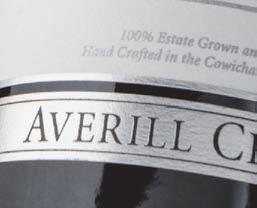
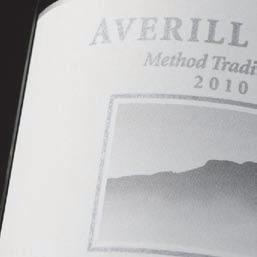



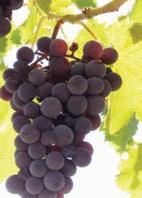


The Riesling revolution has been in the forecast for as long as I’ve worked in the wine industry. That’s a long time. My peers are united in their love for this noble grape and together we have an unspoken pact to champion it. Despite our best efforts, however, Riesling still hasn’t topped the charts as most popular grape. The myth that all Rieslings are sweet and the negative perception of those that are still persist.
Whether you personally love it or hate it, there’s no doubt Riesling is a truly noble grape. It lends itself to making a range of styles; from sparkling to still and dry to sweet. Within the realm of dessert wines, Riesling is equally prized for late- harvest, icewine and botrytis-affected specialties. Its spine-tingling acidity is necessary to balance out the substantial sugar, keeping these from being cloying. This lively backbone also helps calibrate off to medium-dry examples and can render those that are bone-dry austere, especially in their youth.
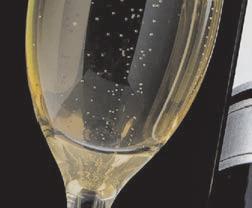
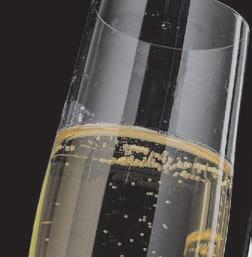

Riesling’s acid structure is a key element to its notable





aging potential. This is enhanced further by concentration of flavours. Riesling may come across as simple and fruity in its youth but often gains incredible complexity with time. I’ve had the privilege of trying beautiful examples from Germany dating back to the 1980s, which exhibit a myriad of intriguing nuances such as flint, diesel, citrus oil, honey and exotic flowers to name a few. And at 30 years plus they were still incredibly vibrant, belying their age.
Yet another testament to Riesling’s greatness is its ability to express where it comes from. Nowhere is this more apparent than in Germany and Alsace. In these regions, the top bottlings hail from single vineyards or crus. Incredibly, wines from neighbouring sites may taste completely different from the other, each demonstrating characteristics specific to its terroir.
Riesling’s many attributes have tempted winemakers around the globe to try their hand at this distinguished grape. Beyond Germany, Alsace and Austria, regions
within New Zealand, Australia and Washington boast fine examples. What links them all is their overall cool climate. Which brings us to British Columbia. Riesling represents one of the first Vitis vinifera grapes planted in British Columbia in the 1970s. Until then, vineyards were dominated by hybrids of other vine species as it was thought that our marginal climate was too cold for superior grapes to survive. The most planted white was a labrusca hybrid called Okanagan Riesling that gave less than stellar wines. Plantings of true Riesling didn’t start expanding until 1988, when most hybrids were pulled out. Today, Riesling is the fourth most planted grape after Pinot Gris, Chardonnay and Gewürztraminer, and in 2015 tonnage was up by 27 percent over 2013.
As B.C. first started to find its footing, Riesling was just one of the many labels in a winery’s stable. While there were hints of promise over time, it is really only in the last decade that this grape has hit its stride. Tantalus’ success with its inaugural 2005 vintage played an important role in bringing attention to Riesling. Today,
B.C. examples show better concentration and balance than in the past. Styles differ between producers, with some preferring to ferment them fully dry while others favour leaving varying degrees of residual sugar to soften B.C.’s often searing acidity.



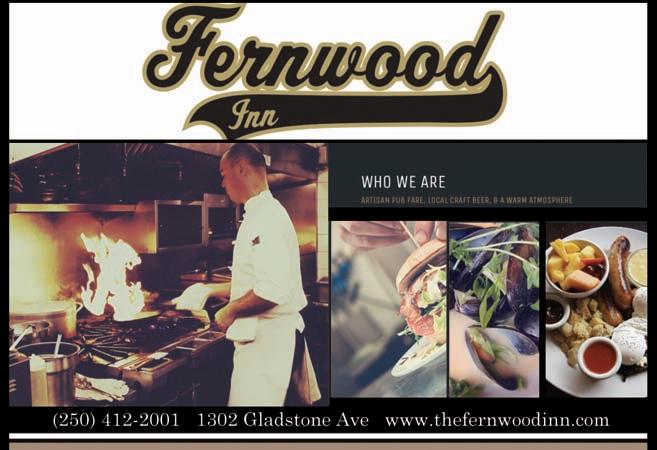
A number of wineries now focus specifically on Riesling. Syncromesh is known for small lots made in different styles. Both Tantalus and Sperling are lucky enough to possess some of B.C.’s original plantings, featuring these in separate bottlings. Mission Hill has dedicated their Martin’s Lane vineyard solely to Riesling (and Pinot Noir). And Riesling is also a big part of the production at Little Farm and Orofino in the Similkameen.
While B.C. has made enormous strides, it’s still early days for our young industry. Producers speak about making world class wine. Those who are truly on the right track are the ones who are actually trying and studying benchmark Rieslings from around the globe. Some wineries have even brought in consulting winemakers from established Riesling regions.

The second annual Judgement of B.C. in June 2016 put our Rieslings to the test. I participated in this blind tasting with 30 of my peers from the east to the west coast. We were presented with twelve Rieslings, six from B.C. and six of international origin and were asked to rank them in order of individual preference. From this, a collective ordering was determined. Rather than being about “better or worse,” the goal was to see where our Rieslings truly sit. The spirit of the competition was about improving. Though Germany triumphed, B.C. came in second place with CedarCreek’s 2014 Platinum Block 3. Just prior, it also won Best Canadian White Wine over 15£ at the Decanter World Wine Awards in London.
While wine professionals keep trying to convince everyone of a Riesling revolution, what is certain is that B.C. is experiencing a Riesling evolution. It has emerged as one of the varieties we are known for and it’s slowly being more wildly embraced by local enthusiasts. An unabashed Riesling fan, I am looking forward to seeing where the evolution takes us.
2013 TANTALUS, NATURAL BRUT, OLD VINE RIESLING, OKANAGAN VALLEY BC VQA $35-40
Top-notch bubble from Riesling specialists. Tantalus’ Natural Brut hails from 1978 Riesling plantings. Zingy and fresh with focused flavours of pear tart, lemon scone and grapefruit pith, it’s a treat with smoked salmon on toast.
2014 LITTLE FARM, ‘MULBERRY TREE VINEYARD’
RIESLING, SIMILKAMEEN VALLEY, BC $27-32
Green apple, lime and an underlying chalkiness that shows up every vintage they’ve made since starting in 2011. Decidedly dry with tons of acid and a long minerally finish. You can drink now with oysters, but this is one I am betting on in the cellar.
2015 SYNCHROMESH, ‘STORM HAVEN VINEYARD’
RIESLING, OKANAGAN FALLS, BC $35-40
Though made in a medium-sweet style (meaning plenty of residual sugar), the Storm Haven bottling is also equally well-endowed with acidity. It offers peach and apricot balanced by a mouth-watering stoniness. At just under nine percent alcohol, it is an ideal companion for hot spicy dishes.
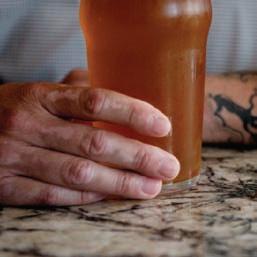

2014 OROFINO, 'HENDSBEE VINEYARD' RIESLING, SIMILKAMEEN VALLEY, BC $22-25
The driest of Orofino’s Rieslings and my personal favourite. Ripe orchard fruit bursts from the glass while vibrant citrus peel lingers on the finish. Makes a fantastic foil for roasted pork with apple and sage.
2015 CULMINA ‘DECORA’ RIESLING, OKANAGAN VALLEY, BC VQA $27-30
Essentially dry, Decora demonstrates persistent quince, nectarine and lime with a whisper of sagebrush. It has the guts to stand up to roasted chicken or turkey dinner.
2014 HARPER’S TRAIL, ‘PIONEER BLOCK’ DRY RIESLING, BC VQA $18-20
Hailing from the emerging region around Kamloops where the climate is truly marginal. At 11 g/L residual sugar, “dry” is a bit of a misnomer. Nonetheless, the acid and sugar are well balance. Bright notes of sage, lemon and green fruit are perfect with a punchy Thai salad.
2015 SPIERHEAD, SADDLE BLOCK, RIESLING, OKANAGAN VALLEY, BC VQA $20-22
Inviting aromas of apple sorbet and linden flowers. Steely and citrusy in the mouth where a very discerning dose of sugar counters brisk acidity. Appropriate for washing down fish tacos.
2015 DAYDREAMER, RIESLING, SINGLE VINEYARD NARAMATA BENCH, BC $20-22
Assertive tropical aromas of guava and passion fruit followed by focused flavours of white grapefruit and stone on the palate. Taut and truly dry Riesling and just lovely with baked ham.
2015 TANTALUS, RIESLING ICEWINE, OKANAGAN VALLEY, BC VQA $70 $66-72 375ml
Excellent concentration of peach essence, baked Honeycrisp apple and Asian pear. As luscious as this icewine is, Riesling’s superb acidity keeps everything in check. You could pair with peach cobbler or just drink it on its own for the sweetest of treats.
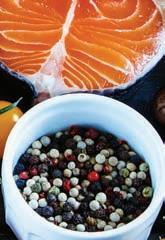
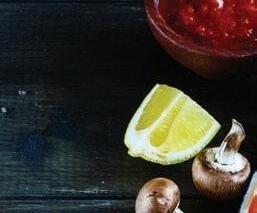
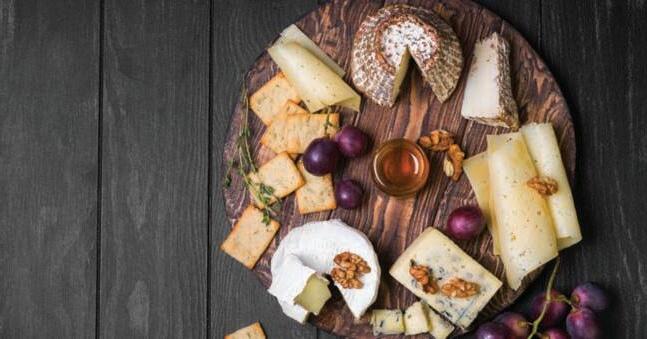

MICHEL LORIOT PATRIMONY BRUT NV
CHAMPAGNE $45-50

On a good day in a good crowd Michel Loriot would perhaps be considered slightly eccentric. Given his propensity to serenade his vineyard and cellar, twenty-four/seven, with the positive vibrations of Brahms, Mozart, Beethoven and Verdi! Amidst the rabble, the verdict might not be so kind. But this I know, he may well be out on the fringes of recognized wine making orthodoxy but he is nonetheless considered to be among the best Pinot Meunier winemakers in Champagne and that my bubble crazed fiends is a feat not to be taken lightly. Michel Loriot makes superb Champagne. Patrimony is a blend of Pinot Meunier (80%) and Chardonnay (20%), relatively cheap and an absolute classic. Very light, very delicate. It’s charm floats like a butterfly across the palate.
UNSWORTH CHARME DE L’ILE NV VANCOUVER ISLAND $23-26









If you enjoy prosecco, this charming little sparkler from the Cowichan Valley is a great island alternative. Soft, fruity and dry with green apple and citrus flavours, a gentle mousse and lovely balance! Delicious.
VENTURI-SCHULZE CUT-CANE SIEGERREBE
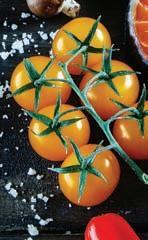
2014 VANCOUVER ISLAND $25-28
Never shy about trying something new or perhaps revisiting something old, the vision of this little gem in Cobble Hill is more often to be found out in the slipstream then entrenched in the mainstream. The character of their unique wines should never be taken lightly. There is so much going on within that is not always readily apparent. Even the light and frivolous can have an old soul. These are wines of the Cowichan; the story they tell is one of time and place. The nose on this Siegerrebe is explosive with powerful citrus, grapefruit and exotic spice aromas and flavours that dance across the palate. Richly textured with good weight, length and intensity.
AVERILL CREEK PINOT GRIGIO 2015
VANCOUVER ISLAND $16-19
Clean and fresh with green melon, citrus and apple aromas and flavours, juicy acidity and a steely, dry resolve. Straight forward, refreshing, the perfect choice for a big platter of oysters.
BEES KNEES CHENIN BLANC-VIOGNIER 2015
SOUTH AFRICA $12-14
A serious quaffer with buckets of ripe peach, honey and tropical fruit flavours. Full-bodied and lush yet nicely balanced with a cut of refreshing acidity.
LEFT COAST CELLARS CALI’S CUVEE PINOT NOIR 2013 OREGON $31-34

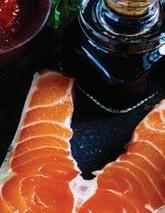
With over 356 acres of prime real estate in the Willamette Valley, Left Coast Cellars is perhaps the biggest player in the Oregon wine scene that nobody this side of the 49th has ever heard of.

Needless to say we have heard of them now. Great fruit with ripe cherry, plum and spice flavours, a lovely silky texture and a hint of soft round tannins that fades through the finish. Fairly firm with good acidity and length.
GIANT HEAD PINOT NOIR 2014 OKANAGAN $27-30
This elegant Okanagan pinot is a very pleasant discovery. Medium bodied with ripe cherry, violet and spice flavours nicely balanced with a blush of fine-grained tannins and a long, supple finish. Very tasty indeed.
VECCHIA CANTINA CHIANTI 2014 TUSCANY $12-14
Located in the heart of the Vino Nobile de Montepulciano region of southern Tuscany, the cantina has been making wine since 1937. Bright ruby, with pronounced cherry and dusty earth aromas. Medium-bodied with sweet red berry fruit flavours that expand as the wine puts on weight with a few moments in the glass. A great pizza red for everyday drinking.
JOOSTENBERG ORGANIC FAMILY BLEND RED 2014 PAARL $15-17
The family blend consists of organically grown Syrah, Mourvedre and Viognier, ten months in old (seasoned) French barrels and some damn fine wine making. It is a robust house red with plenty of fruit and loads of character.
ROCKY CREEK WILD BLACKBERRY
NV VANCOUVER ISLAND $25-27
So what is there not to like about this richly flavoured island favourite? It is the very essence of sun kissed blackberries on a late summer day. The sweetness and wildness of the fruit explodes on your palate with each and every sip. It is sweet but not cloying with good length and a surprisingly dry finish. Rocky Creek Wild Blackberry just won Double Gold at the All Canadian Wine Championships and the Best Soft Fruit Dessert Wine in Canada this year so supplies could be extremely limited.

Most people when they think of brandy are immediately taken to the grandeur and spectacle of Cognac, with visions of Napoleon Bonaparte sipping from a snifter, one hand forcefully tucked into the breast of his jacket. But outside of the more classic, aged brandies of Cognac there is a spectacular unaged brandy called pisco that comes from South America and has its own following there and in Canada.
Pisco is not like other aged brandies. Fragrant and aromatic, it has a complex mixing quality that can’t be quantified like gin or vodka can. This spirit is only allowed to be made under the name “Pisco” in Chile and Peru, and asking a citizen of these countries who was the first to distill the spirit will lead to long, passionate arguments on both sides. It was originally created with help from Spanish settlers to replace the expensive and long-travelled brandies from the homeland. This trend towards clear, unaged brandy is a perfect match for our wine-growing regions and for the strong influx of distilleries into the province. While they can’t be called “Pisco” for obvious legal reasons, B.C. distillers have become creative; when there are no rules, you make them. Two examples that are especially notable are Okanagan Crush Pad’s “Narrative Spirit of the Vineyard” from the Okanagan and Arbutus Grand’s “Grand Visco” from right here on the island. The Spirit of the Vineyard is completely unaged and a blend of white and red grape distillates made at the state of the art facility in Summerland, which only recently expanded into distilling. (They are the distillery behind
Rinse a large cocktail glass with Herbsaint or absinthe. Place the Pisco, Amaretto, lemon juice and bitters into a cocktail shaker and add plenty of ice. Shake and double strain into a large cocktail glass. Garnish with an orange twist
the marvellous Vij’s Bolly Water Gin exclusively for Vikram Vij restaurants.) The spirit’s nose and palate are reminiscent of the South American brandy. It is vodkalike, very fruity, slightly floral and nutty.
The island’s claim to fame in the “pisco” category is the latest addition to the lineup of Nanaimo’s Arbutus Distillery. Grand Visco is distilled from Pinot Gris and other Germanic varietals grown on Vancouver Island, it is then aged for a short time in ex-bourbon barrels. Both spirits are delicate, fragrant and aromatic and like nothing you’ve smelled or tasted before.

The classic cocktail made with Pisco is the Pisco Sour, a simple mix of pisco, lime, sugar and egg white with a few drops of Angostura or more traditional Amargo Chuncho bitters. This is, as is the birthplace of Pisco, another contentious issue between loyal and passionate Chileans and Peruvians. Whoever created it, at whatever time and wherever it was first devised, it is a fine cocktail that shows the simplicity of the spirit. One of the local cocktail scene godfathers, Solomon Siegel, says, “There is something enchanting about great un-aged spirits. They speak with a certain candour and veracity that is absent in their aged counterparts. Pisco gives you the unadorned soul of the grape.” A poetic quote about an amazingly misunderstood spirit, but one that is surely gaining more and more notoriety.
At Solomon’s family restaurant Pagliacci’s, Solomon uses pisco in another famous sour combination, the Amaretto Sour. The addition of Herbsaint, an aniseflavoured liquor, gives a subtle yet complex anise note to the house speciality.
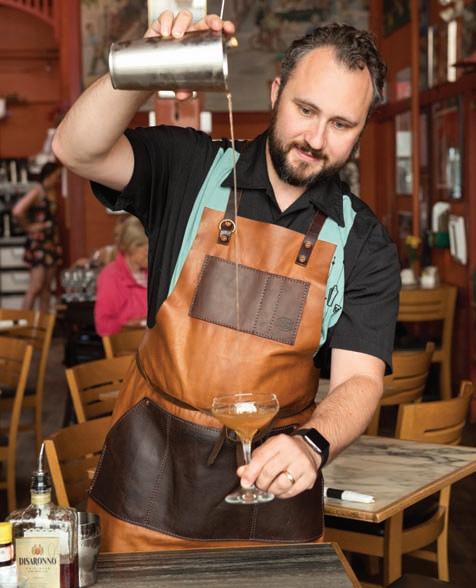
Whichever way you choose to drink pisco or the BC equivalents, enjoy the aromatics as well as the true nature of the grape coming through in the spirit. Bright and floral, it is the distilled heart of South America.
